Designing an open-concept living room and dining room it’s feet on exciting but also a little overwhelming. When everything sits in one shared space, it’s easy for the room to look cluttered or mismatched.
This guide helps you understand, compare, and choose the best layout, furniture, colors, and styling tricks to make your combo space look intentional, cozy, and balanced.
What You’ll find:
- How to plan an open-concept layout that actually works
- What to prioritize before decorating
- 25 easy, stylish ideas you can compare instantly
- Tips to avoid clutter, improve flow, and make the two zones blend beautifully
How to Plan a Living Room + Dining Room Combo (Quick Guide)

| Step | What to Do | Why It Matters |
| 1. Define your main purpose | Decide if the space is for cozy family time, hosting dinners, small-space living, or a multipurpose setup. | Helps you choose the right furniture and layout from the start. |
| 2. Map out traffic flow | Ensure you can walk through the space without bumping into chairs, sofas, or decor. | Makes the area functional, open, and easy to navigate. |
| 3. Use matching visual cues | Repeat colors, woods, textures, and metal finishes across both zones. | Keeps the living and dining areas visually connected. |
| 4. Compare furniture scale | Large dining table → choose a streamlined sofa. Big plush sofa → choose simple dining chairs. | Prevents one side from overpowering the other. |
| 5. Create balance through lighting | Use pendant lighting to define the dining zone and floor/table lamps for the living area. | Adds warmth, balance, and clear separation in an open space. |
25 Living Room Dining Room Combo Ideas for Open-Concept Spaces
Use these ideas like a menu compare them, mix them, or try one at a time.
1. Create Zones and Brighten the Dining Table
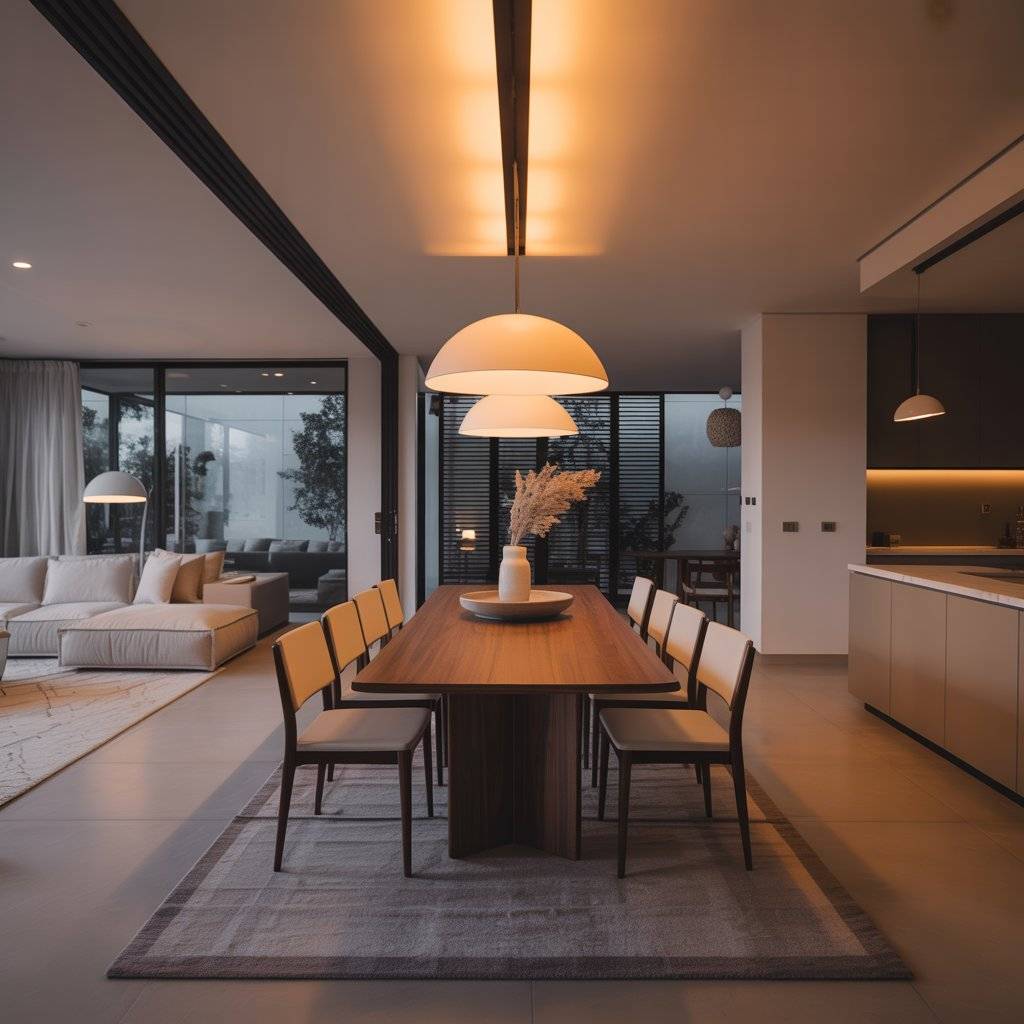
In an open-concept space, it’s easy for living and dining areas to blur together. Use a rug to anchor the living area, place the sofa to define the lounge zone, and position the dining table where it feels intentional.
Adding a pendant light or chandelier above the table not only brightens mealtime but also visually marks the dining area, creating a clear and welcoming separation without walls.
| Area Rug: Check price on Amazon | Pendant Light / Chandelier: Check price on Amazon | Dining Table: Check price on Amazon |
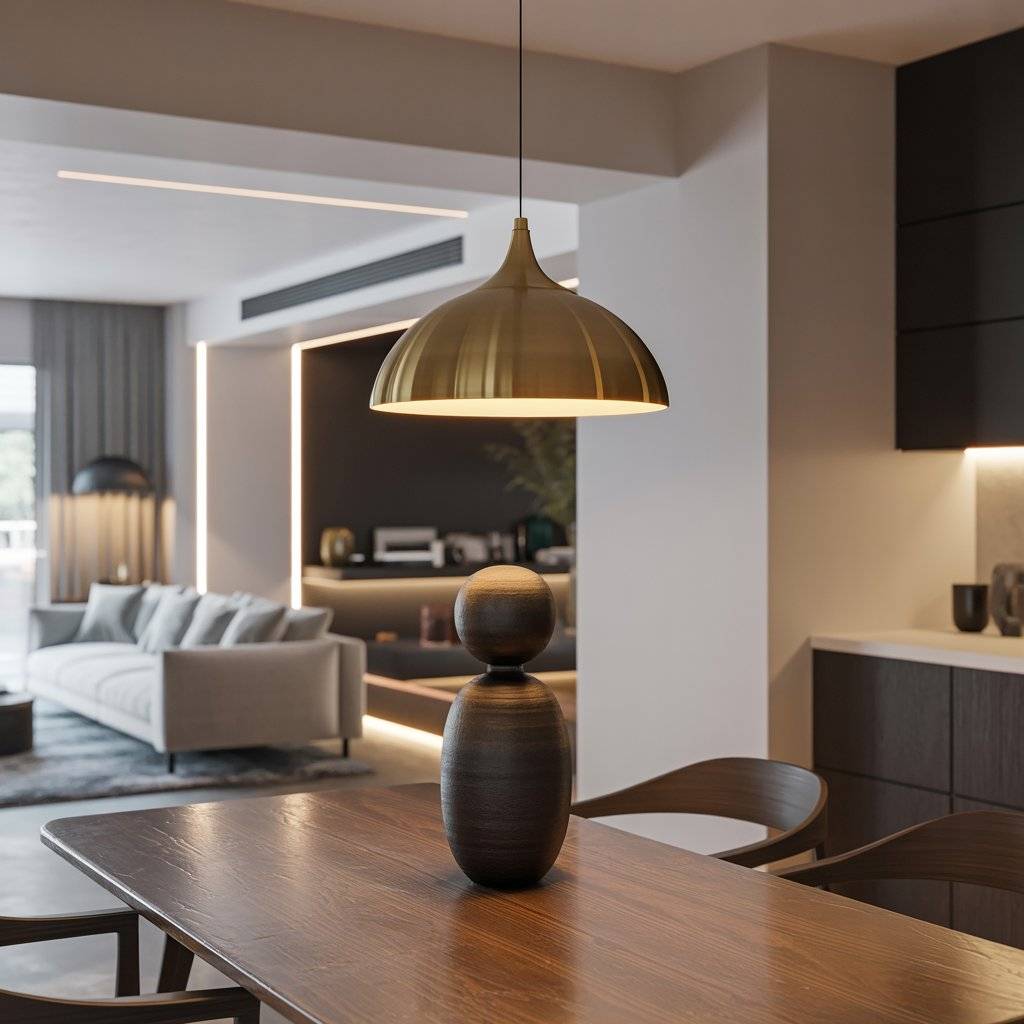
2. Use Natural Wood Grain on the Dining Table for Modern Colors
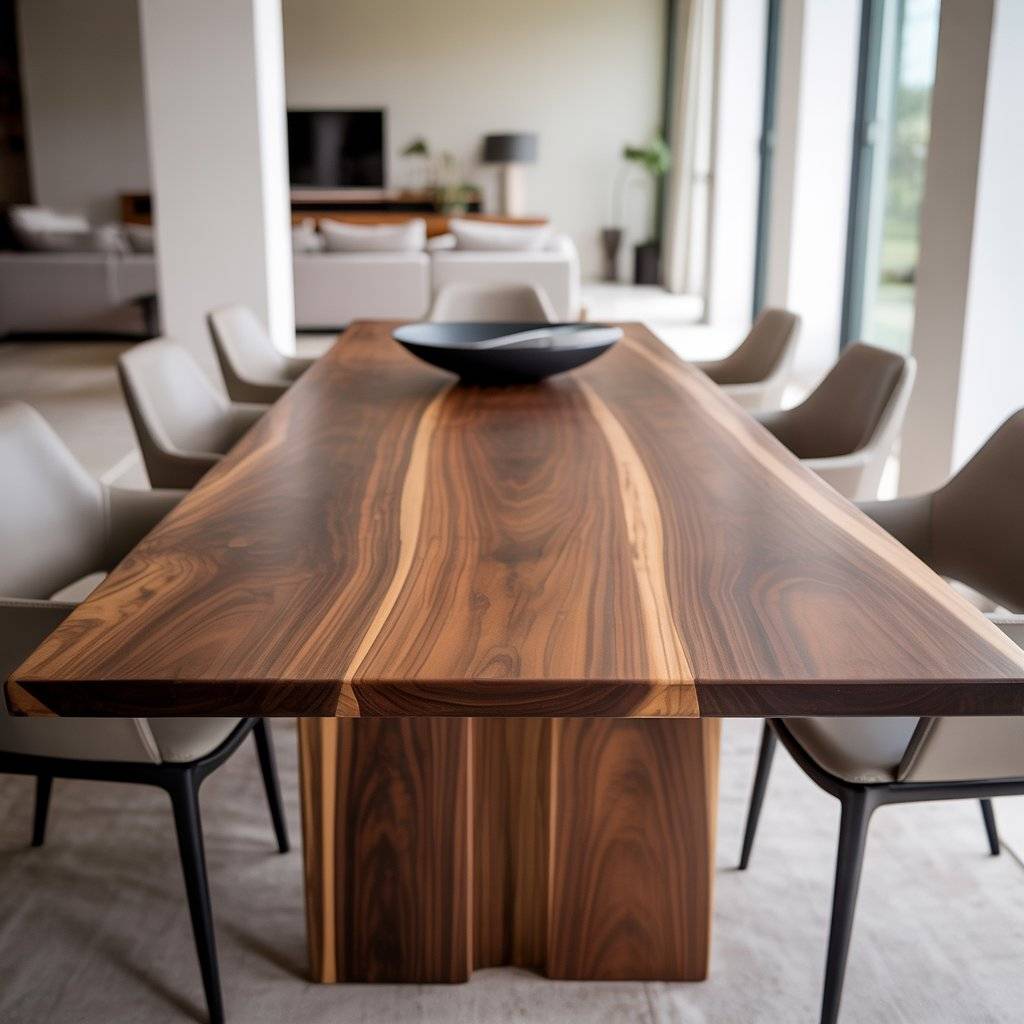
Showcasing the natural wood grain on your dining table adds instant warmth and texture to an open-concept space. Whether you have light oak, walnut, or another wood tone, keeping the finish simple allows the wood’s natural patterns to shine.
This approach works well with modern colors, helping the dining area feel grounded and inviting without overpowering the living zone. Pair it with neutral chairs or subtle textiles to let the wood remain the focal point while maintaining a cohesive, balanced look.
| · Dining Table (Light Oak/Walnut): [Check price on Amazon] | · Dining Chairs: [Check price on Amazon] | · Table Runner or Placemat Set: [Check price on Amazon] |
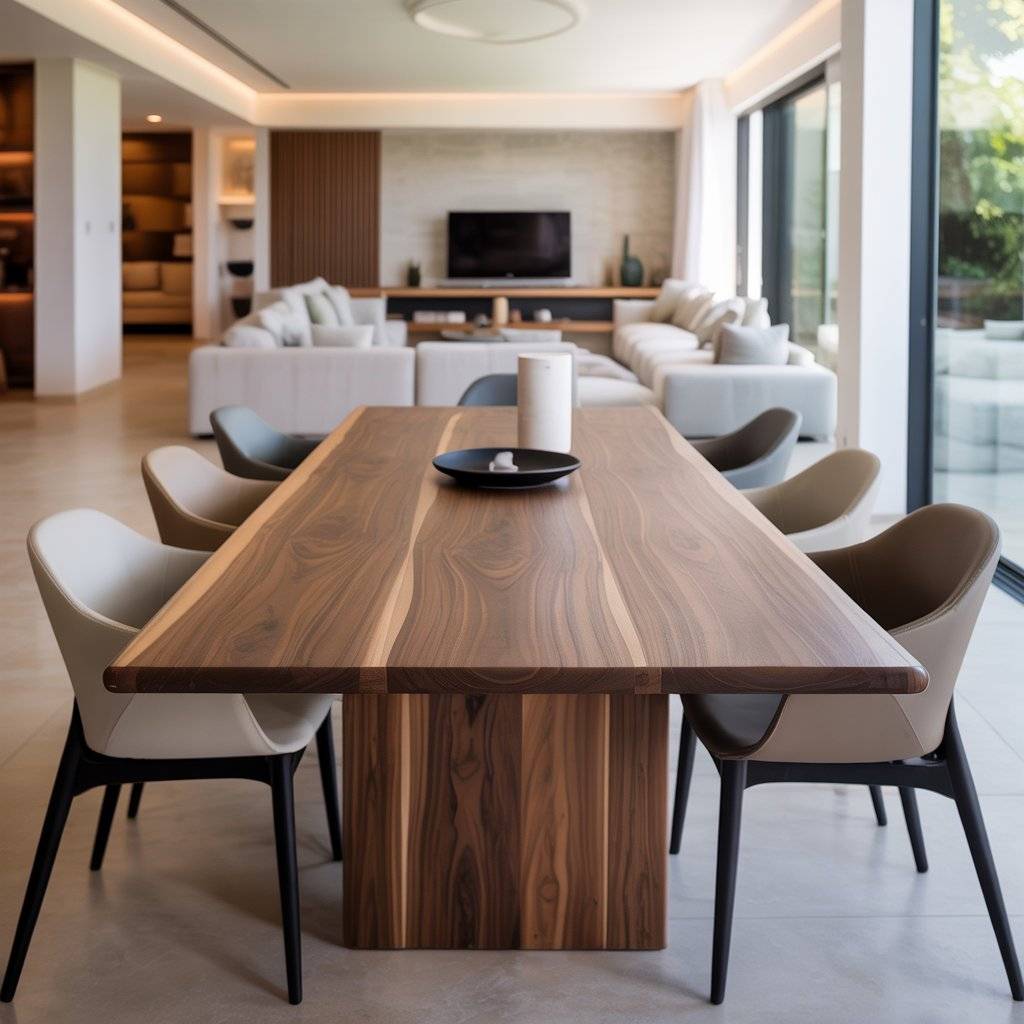
3. Place the Sofa as a Room Divider
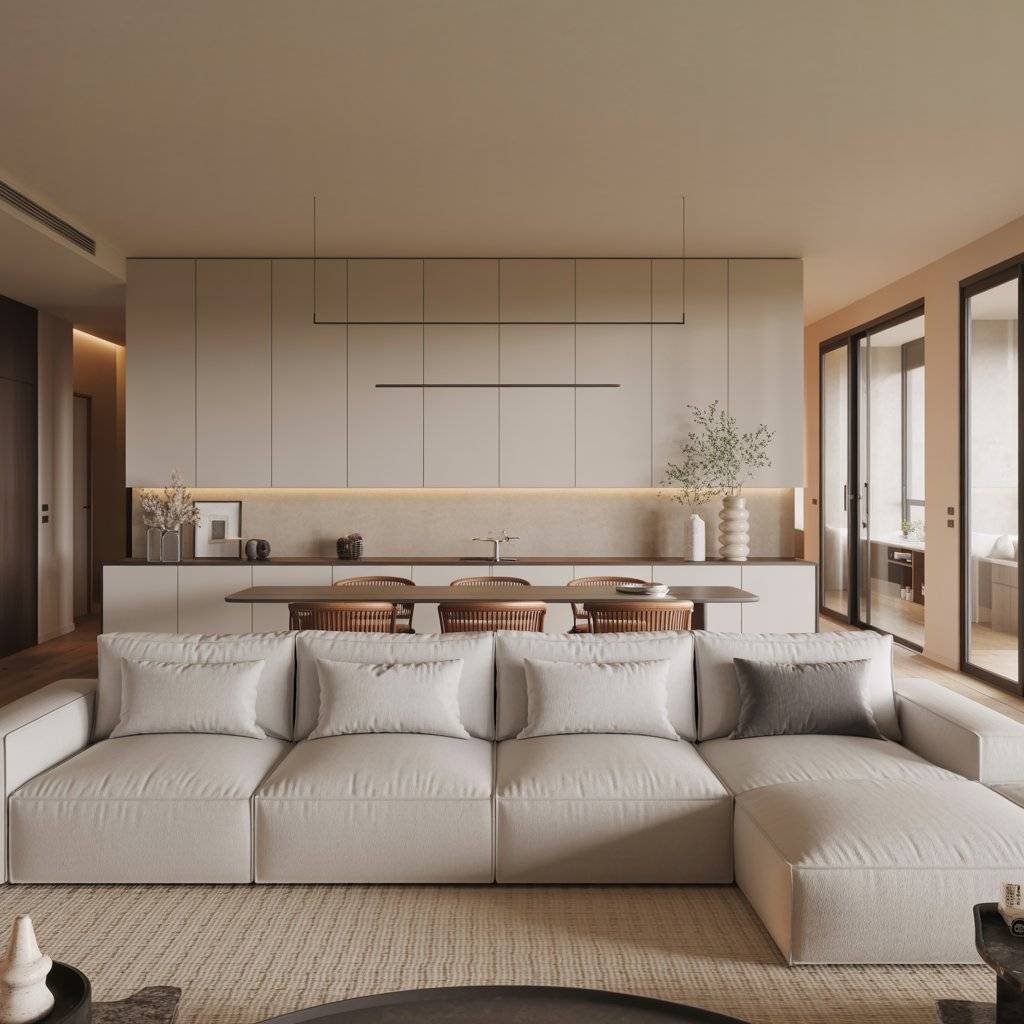
Positioning your sofa with its back facing the dining area is a simple way to define each zone without adding walls. This creates a visual boundary between the living and dining spaces while keeping the open flow intact.
You can enhance the effect with a console table or low shelving behind the sofa to add storage and style, making both areas feel intentional and connected.
| · Sofa (Low-back or Streamlined): [Check price on Amazon] | · Console Table: [Check price on Amazon] | · Side Table / Shelf: [Check price on Amazon] |

4. Add a Console Table Behind the Sofa
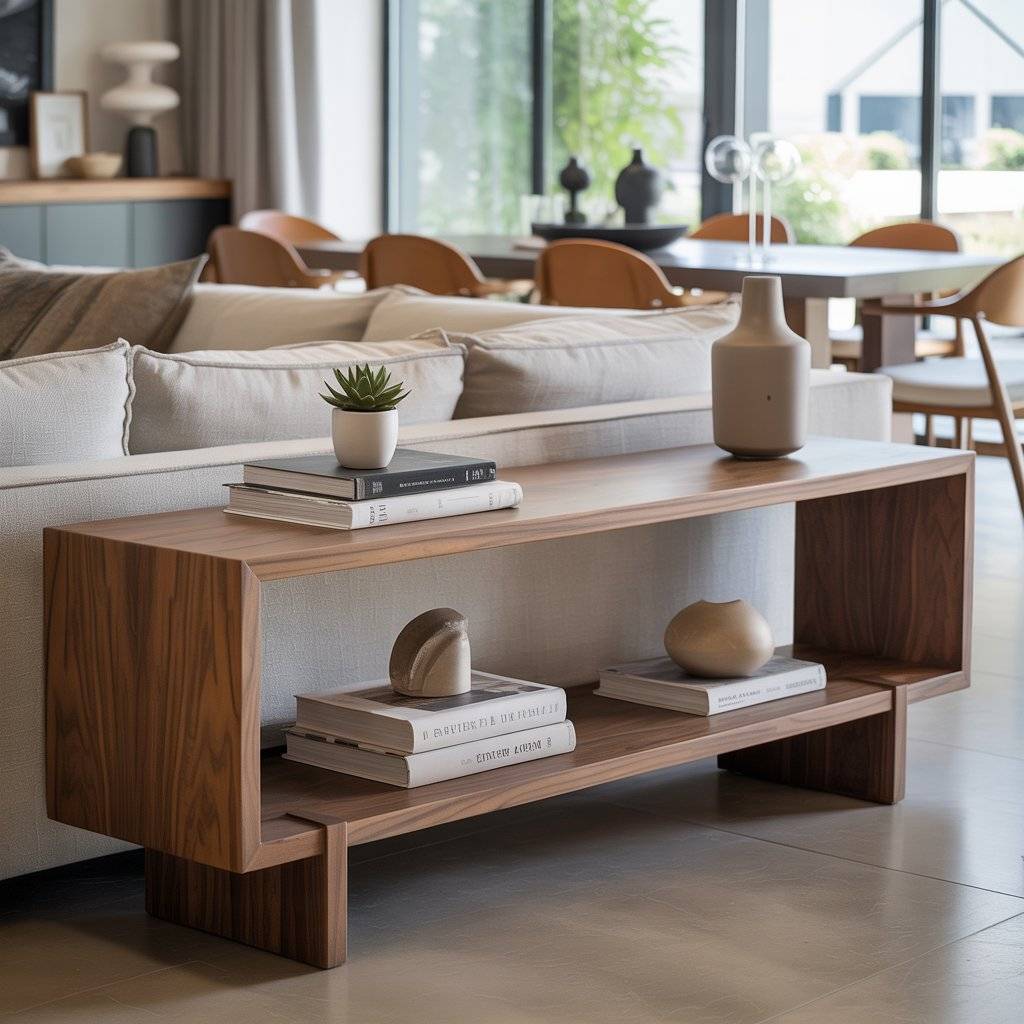
A console table behind the sofa is a simple way to create a subtle separation between the living and dining areas. It provides a visual boundary without blocking the open flow of the space.
Beyond its functional role, a console table can also add style and storage display books, plants, or decorative items to make both zones feel intentional and connected.
| · Console Table: [Check price on Amazon] | · Decorative Baskets or Boxes: [Check price on Amazon] |
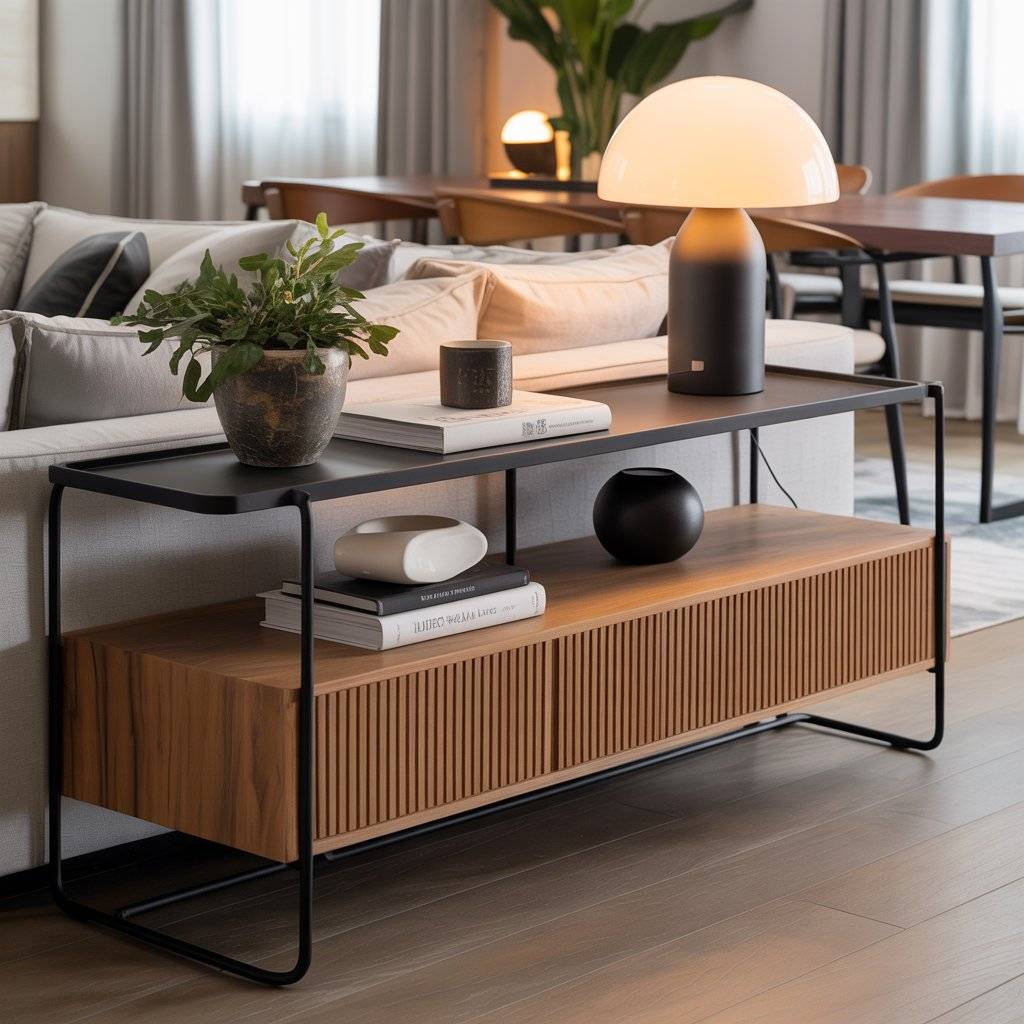
5. Choose a Round Dining Table for Small Spaces

Round dining tables are perfect for compact open-concept areas because they allow smooth traffic flow and make the space feel less crowded.
Unlike rectangular tables with sharp corners, round tables are easier to navigate around and can accommodate more people in a smaller footprint. Pair a round table with slim, lightweight chairs, and you’ll create a cozy dining area that blends seamlessly with your living space.
| · Round Dining Table: [Check price on Amazon] | · Lightweight Dining Chairs: [Check price on Amazon] |
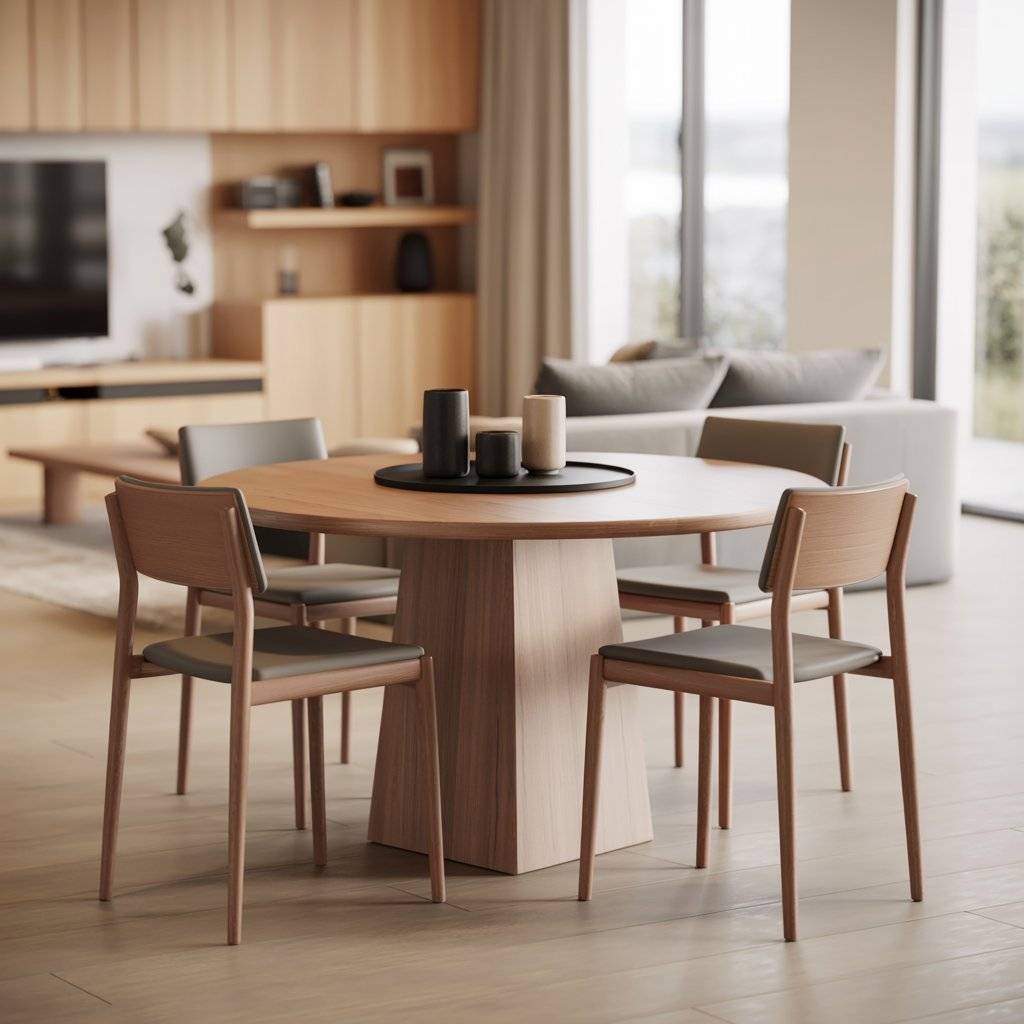
6. Hang Pendant Lighting Over the Table Only
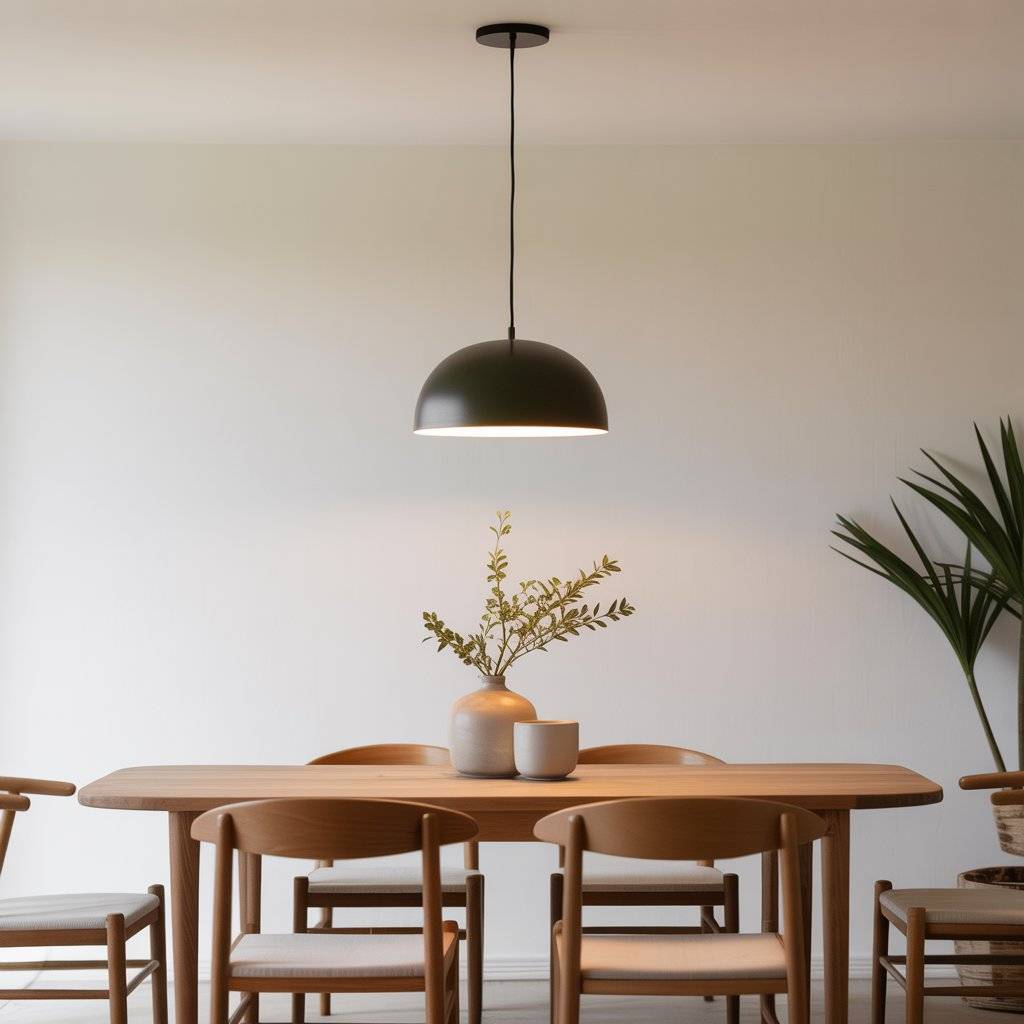
A single pendant light over the dining table helps define the eating area without cluttering the rest of the open space. It creates a visual anchor, drawing attention to the table and setting a cozy, intentional mood.
Choose a fixture that complements your style and scale too large can overwhelm the room, while too small may feel disconnected. This simple step instantly separates the dining zone while keeping the overall space open and airy.
| · Pendant Light: [Check price on Amazon] | · Floor Lamp: [Check price on Amazon] | · Table Lamp: [Check price on Amazon] |

7. Match Wood Tones for a Cohesive, Polished Look

Using consistent wood tones throughout your open-concept space instantly makes the room feel balanced and intentional. Pair light oak dining chairs with a light oak coffee table, or walnut dining furniture with a walnut media console, so each area complements the other.
Mixing wildly different finishes can create visual clutter, while matching tones tie the living and dining zones together seamlessly, creating a harmonious, timeless look.
| · Coffee Table: [Check price on Amazon] | · Dining Chairs (matching wood tone): [Check price on Amazon] | · Media Console: [Check price on Amazon] |

8. Use Curtains to Pull the Room Together
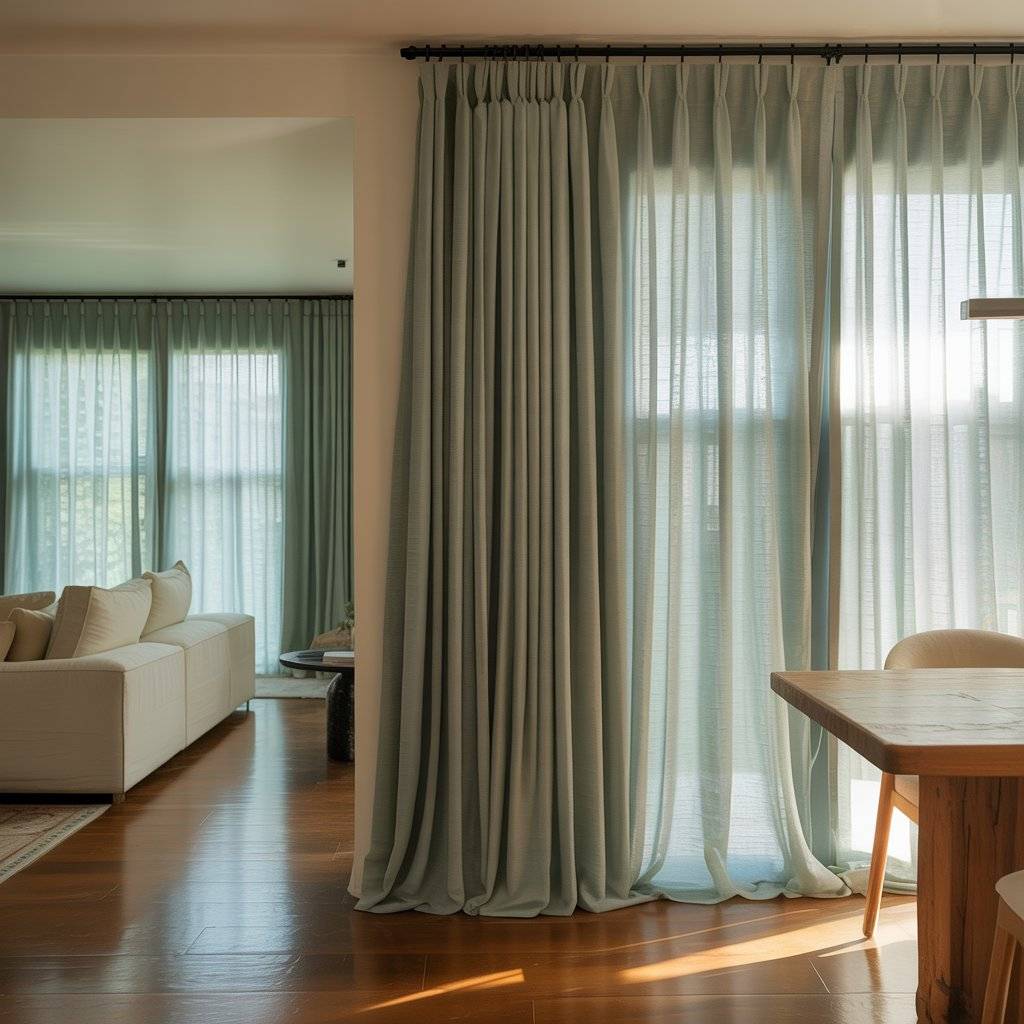
Curtains are a simple but powerful way to unify your living and dining areas. If both zones share a large window or a sliding glass door, choose a fabric, color, or pattern that works in both spaces.
Matching curtains create visual continuity, make the space feel larger, and soften transitions between zones. You can also use layered textures like a sheer panel with a heavier drap to add depth while keeping the look cohesive.
| · Curtain Panels: [Check price on Amazon] | · Curtain Rods / Hardware: [Check price on Amazon] |
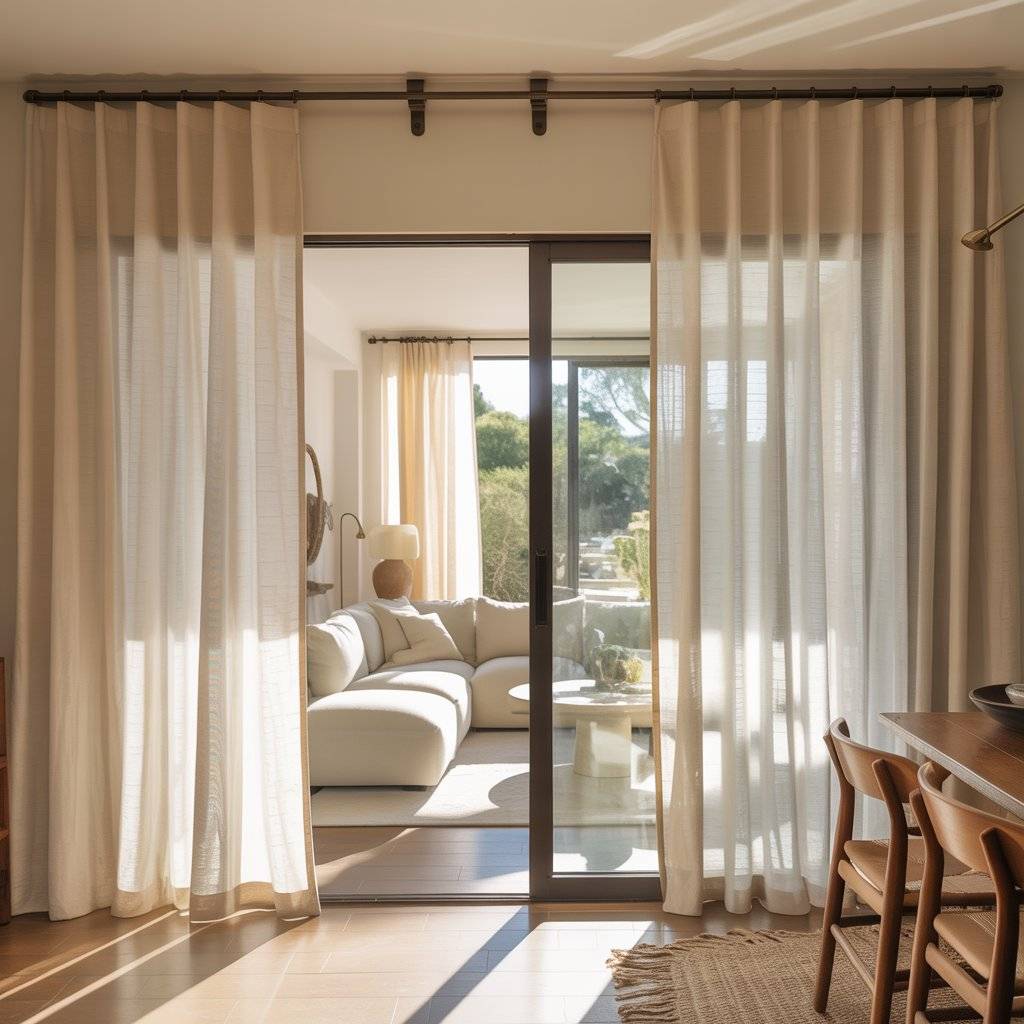
9. Add Matching Art on Both Sides of the Room
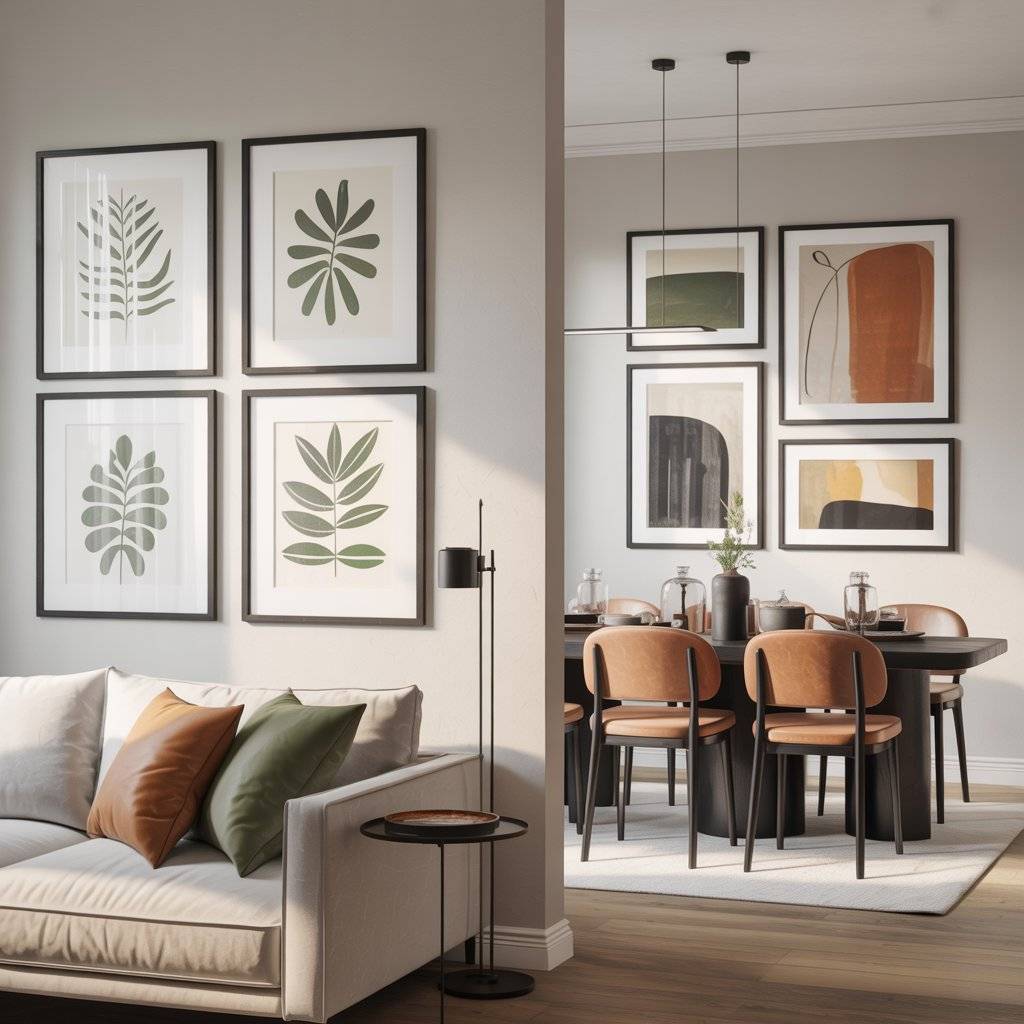
Artwork is an easy way to visually tie your living and dining areas together. Choose pieces with similar frames, colors, or themes so the eye naturally flows across the space.
For example, if you have a set of black-framed prints in the living area, echo that style on the dining wall with complementary artwork. This creates a sense of cohesion, making the open-concept space feel thoughtfully curated rather than disjointed.
| · Wall Art / Prints: [Check price on Amazon] | · Frames: [Check price on Amazon] |
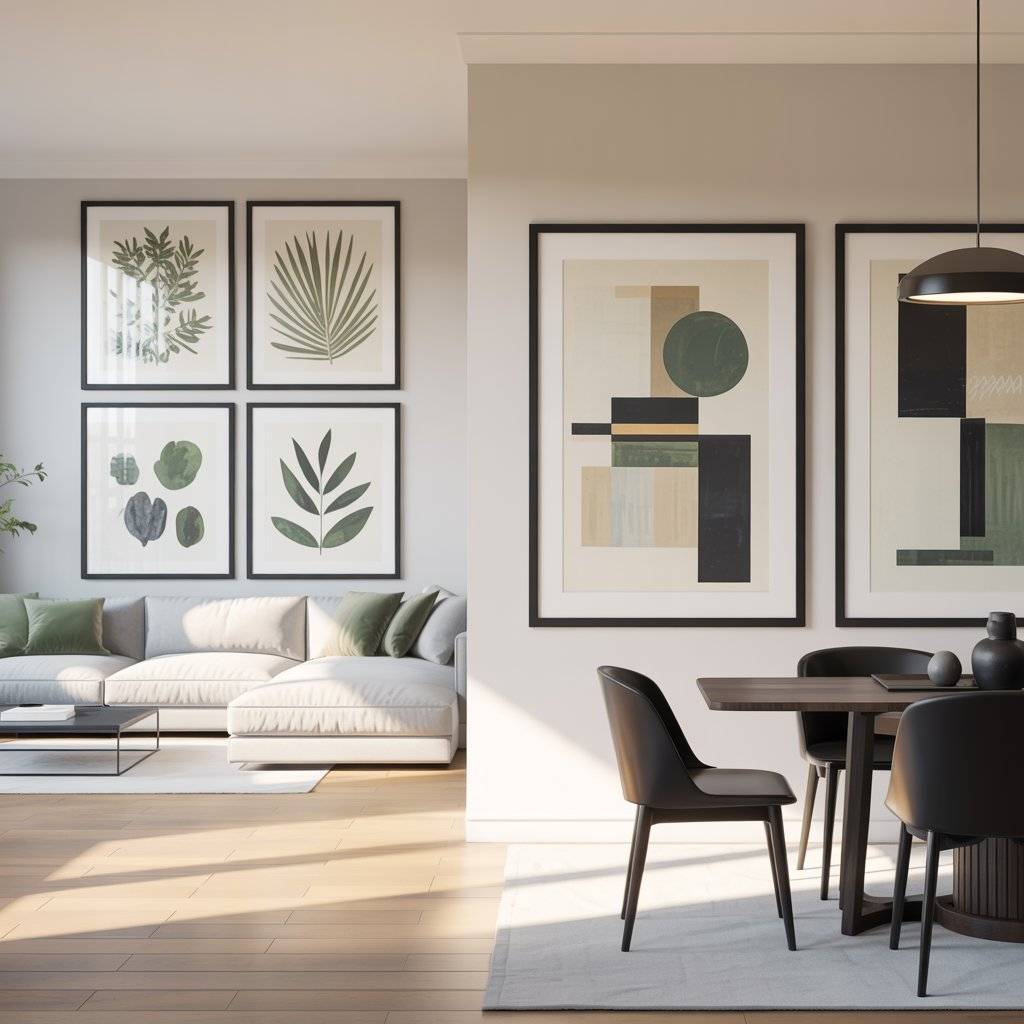
10. Keep Large Dining Furniture Against the Walls

Placing large pieces like dining tables, benches, or buffets against the walls opens up the central space, making traffic flow smooth and effortless. This arrangement prevents the room from feeling cramped while still providing plenty of seating and surface area for meals.
By keeping the center clear, both your living and dining zones feel airy, organized, and easy to navigate, which is especially important in open-concept layouts.
| · Dining Buffet / Sideboard: [Check price on Amazon] | · Dining Table: [Check price on Amazon] |
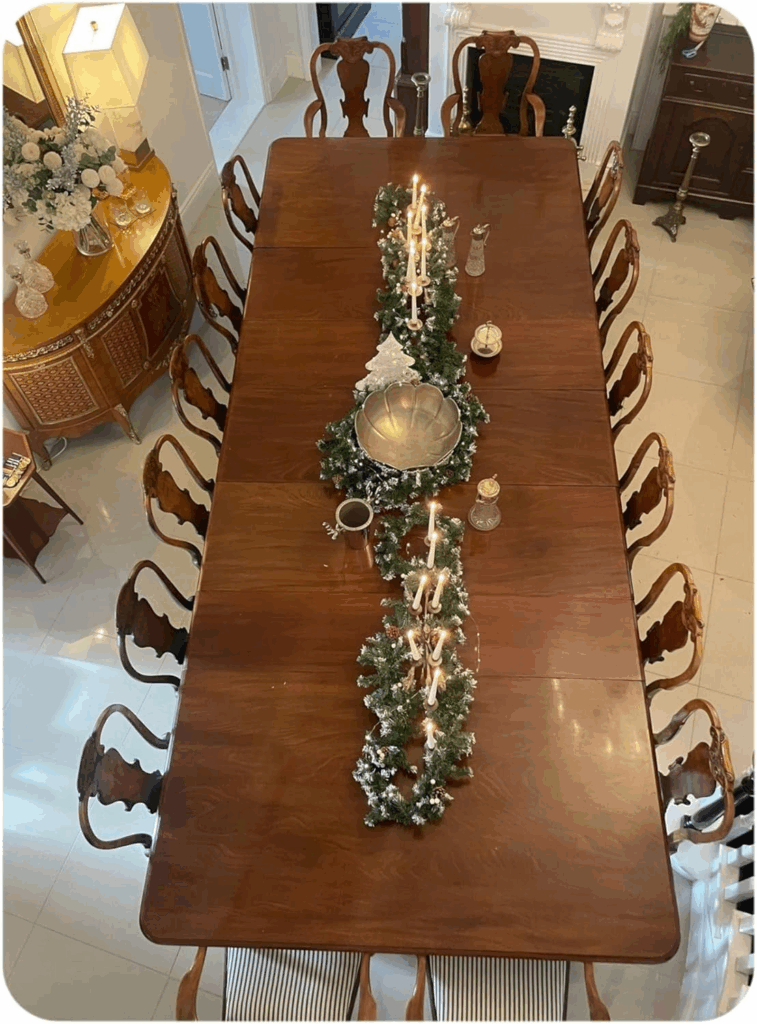
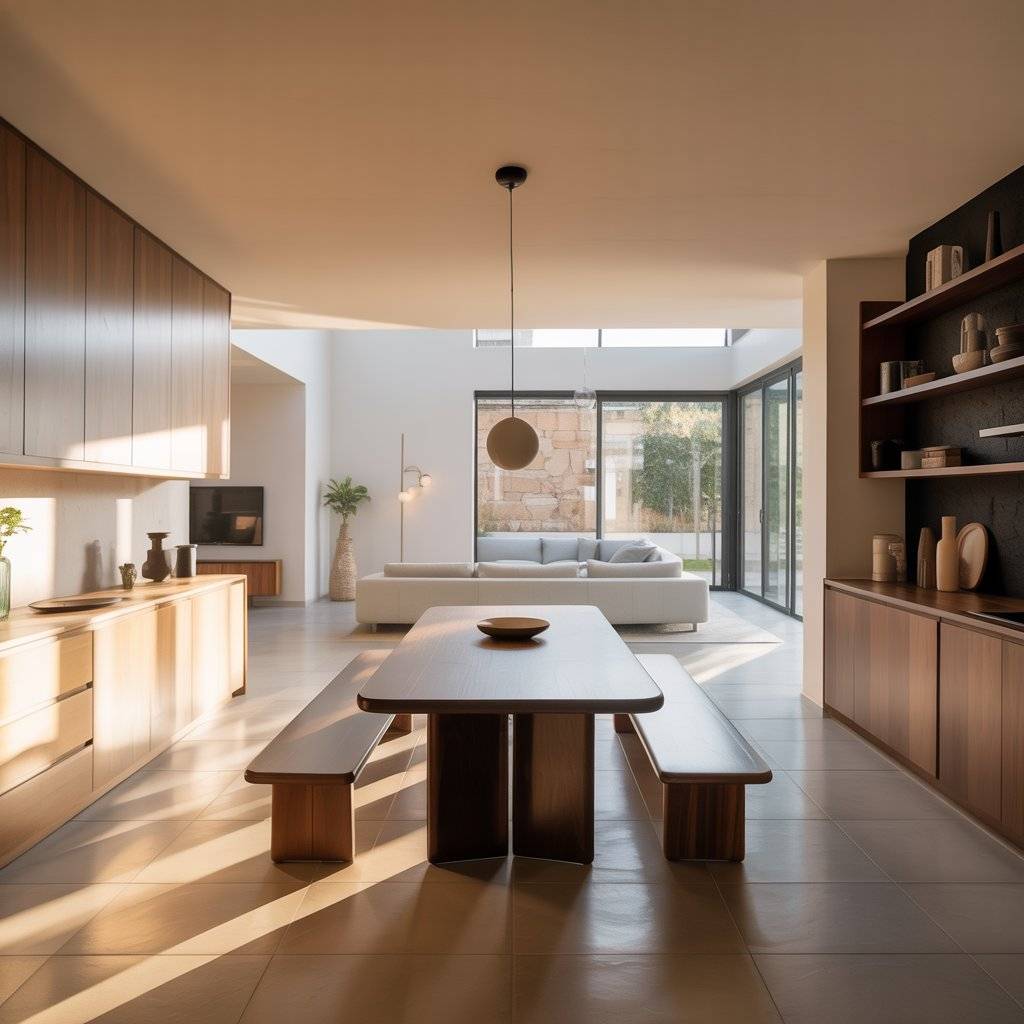
11. Try a Banquette or Bench Seating for Cozy, Space-Saving Dining
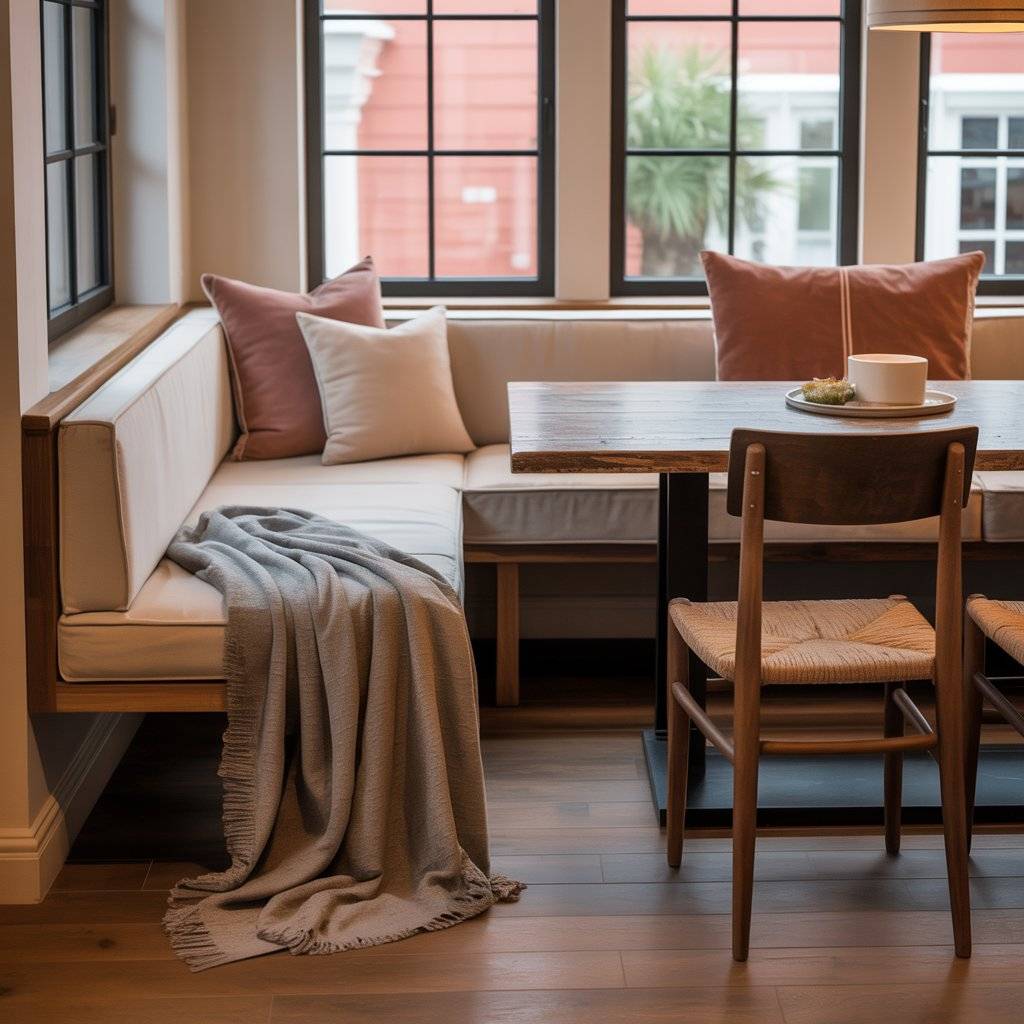
Banquettes and benches are a smart way to save space in an open-concept layout while adding a warm, inviting vibe. They tuck neatly against the wall or window, leaving more room for traffic flow and making the dining area feel intimate.
Pair a bench with a simple dining table and a few chairs, or add cushions and a throw to make it feel like a restaurant-style nook that’s perfect for family meals and casual gatherings.
| · Dining Bench / Banquette: [Check price on Amazon] | · Mondern Dining Table: [Check price on Amazon] |

12. Use Low-Back Sofas to Keep the Room Airy

Low-back sofas are perfect for open-concept living areas because they maintain clear sight lines between the living and dining zones. A lower profile allows natural light to flow freely and keeps the space feeling open and uncluttered.
Pair a low-back sofa with a streamlined coffee table or minimal side tables to enhance the airy, spacious vibe while still creating a cozy seating area.
| · Low-Back Sofa: [Check price on Amazon] | · Coffee Table: [Check price on Amazon] |
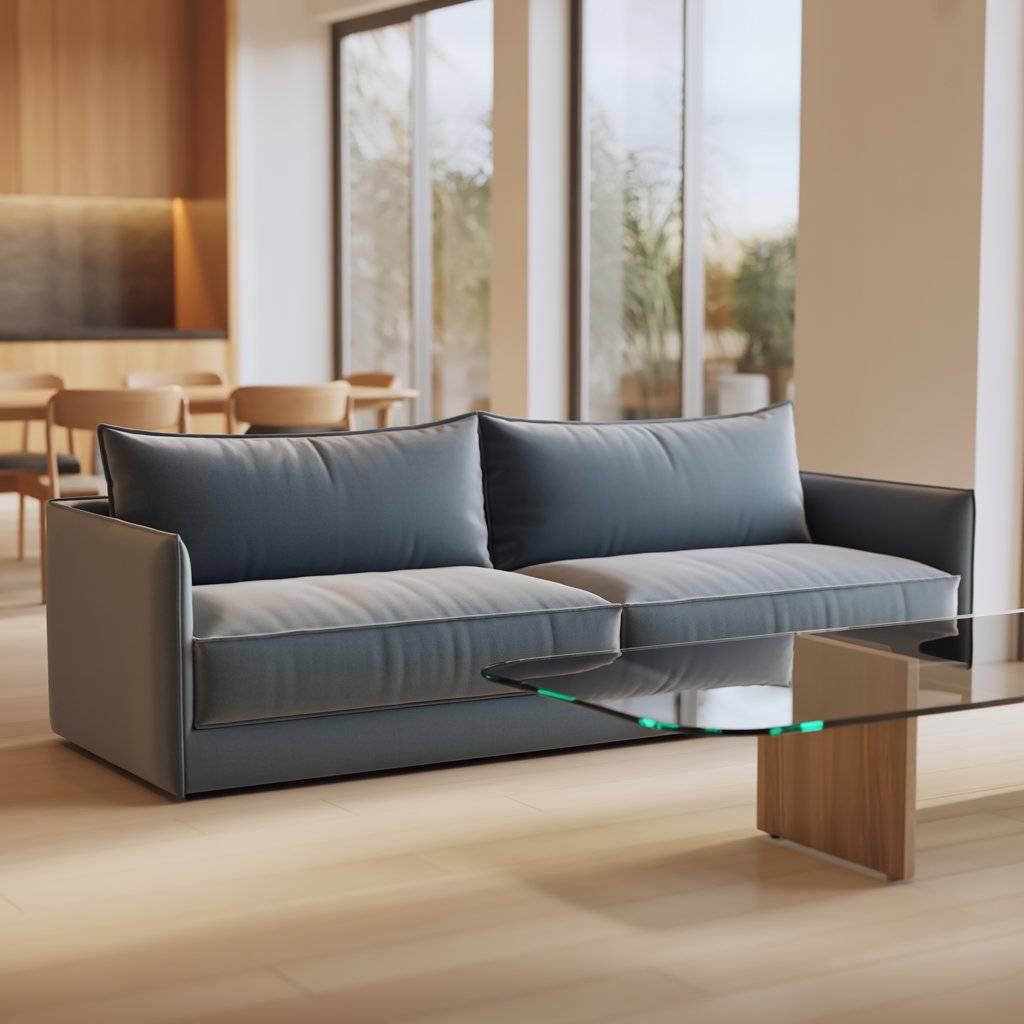
13. Anchor the Dining Area with a Statement Light Fixture
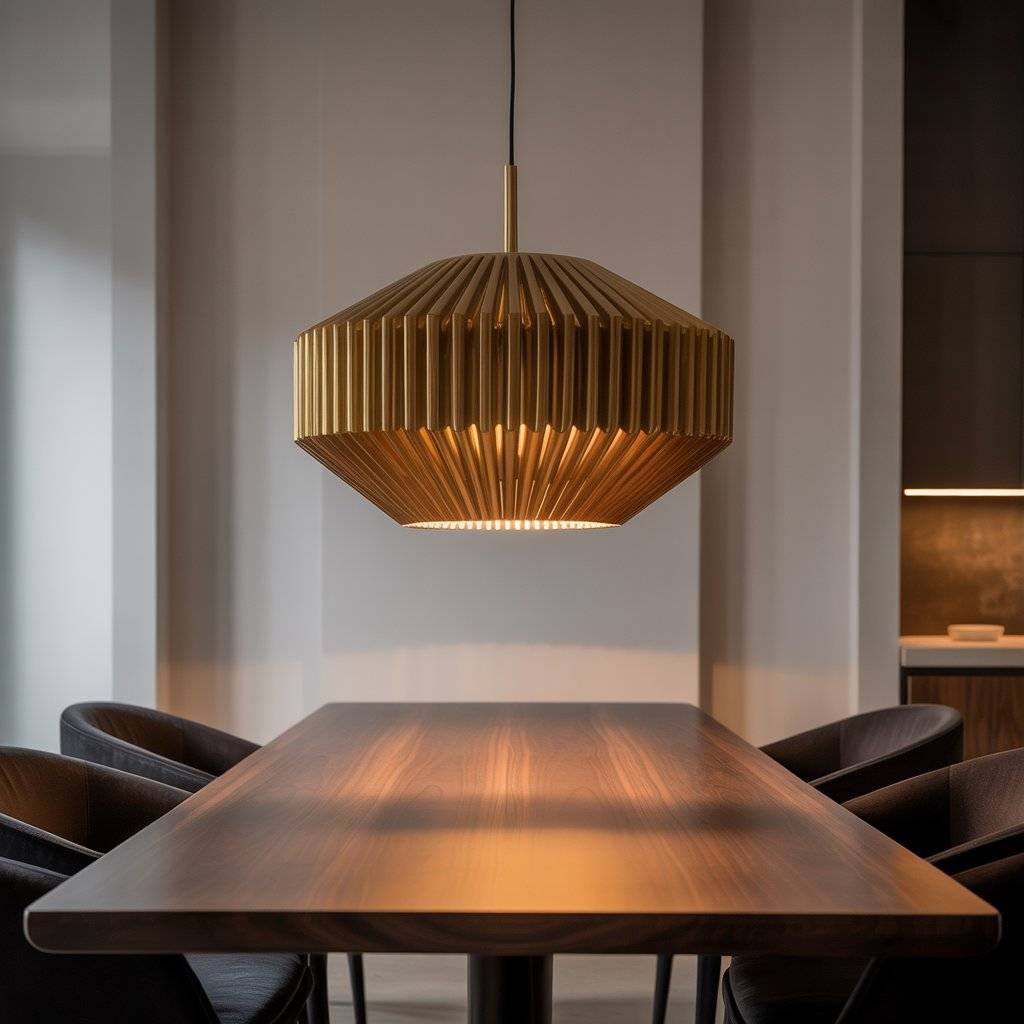
A bold light fixture can instantly define your dining zone and give even a small table a sense of purpose. Choose a chandelier, pendant, or sculptural lamp that complements your style and draws the eye upward.
This not only anchors the dining area visually but also adds warmth and personality, making the space feel intentional and inviting.
| · Chandelier or Pendant: [Check price on Amazon] | · Table Centerpiece / Tray: [Check price on Amazon] |

14. Add Plants to Soften Both Zones
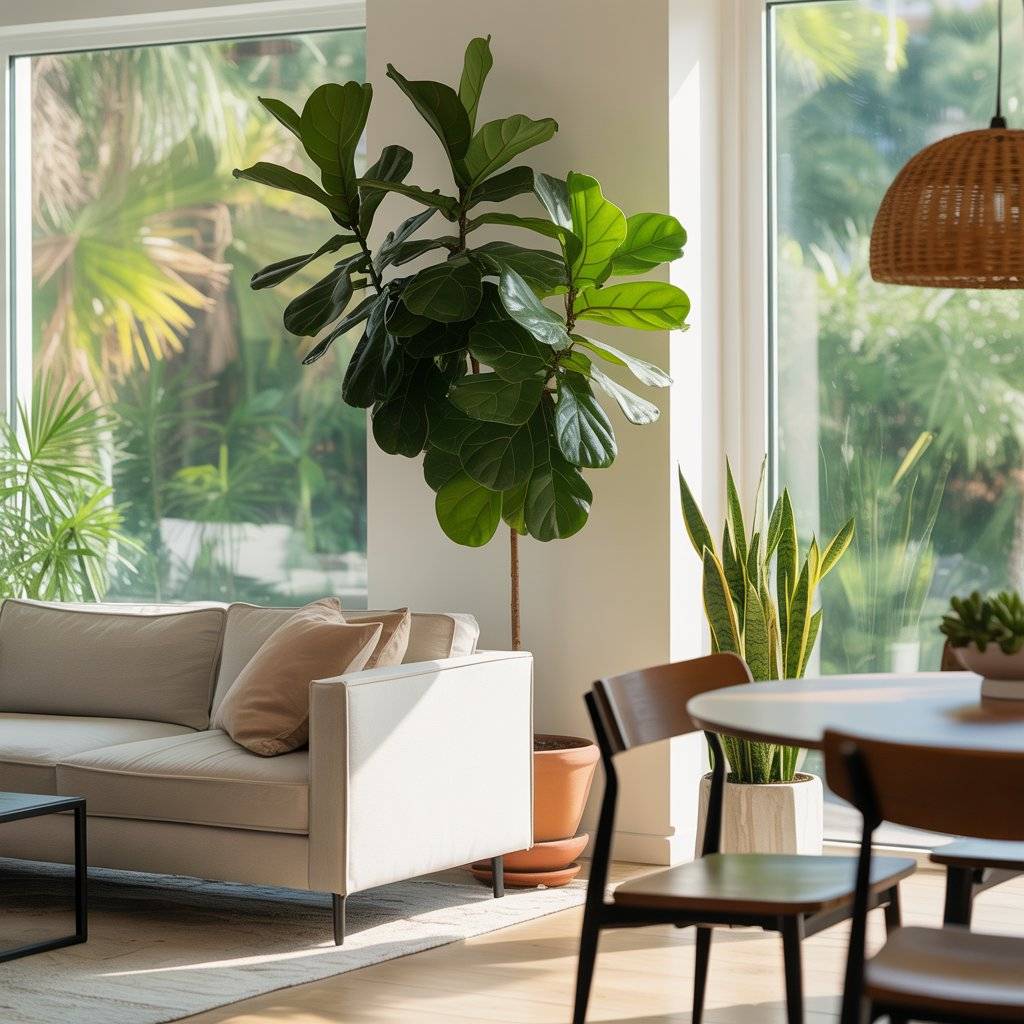
Greenery instantly brings life and warmth to an open-concept living and dining area. Place a tall plant behind the sofa to create a natural backdrop for the living space, and add a smaller potted plant near the dining table to balance the room visually.
Plants also help break up large areas, add texture, and make the space feel inviting without cluttering it. Choose easy-care varieties like fiddle leaf figs, snake plants, or pothos for long-lasting impact.
| · Tall Indoor Plant: [Check price on Amazon] | · Medium / Small Potted Plants: [Check price on Amazon] | · Planters: [Check price on Amazon] |

15. Use Slim Shelving Instead of Bulky Cabinets

Slim shelving units create storage without overwhelming your open-concept layout. Unlike bulky cabinets, they keep sight lines open and make the space feel airier and more spacious.
Use floating shelves or narrow bookcases to display décor, plants, or books, giving both the living and dining zones function and style without blocking light or flow.
| · Floating Shelves: [Check price on Amazon] | · Narrow Bookcase: [Check price on Amazon] |

16. Choose Similar Fabric Textures for a Unified Look
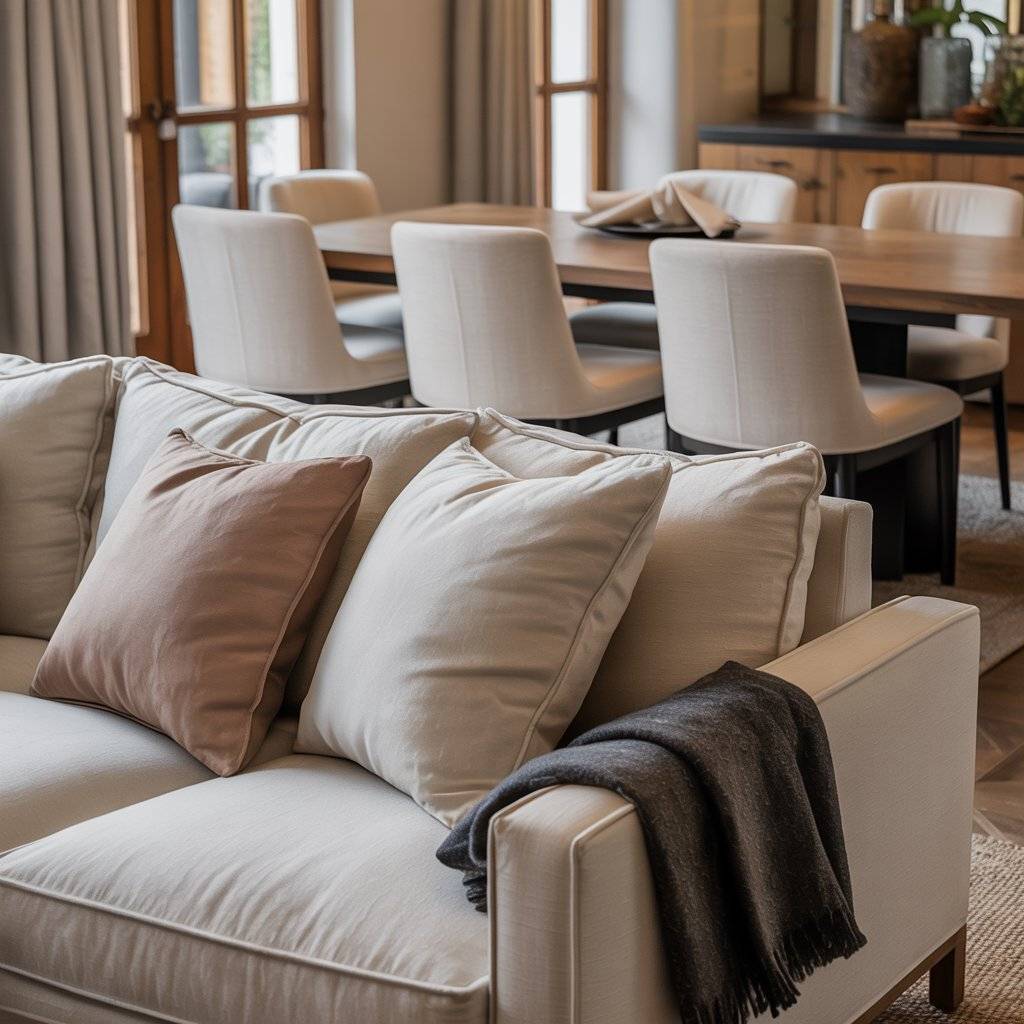
Repeating fabric textures across your living and dining areas instantly creates visual harmony. For example, pairing a linen sofa with linen dining chairs ties the two zones together without being matchy-matchy.
You can also mix subtle variations like cotton cushions on a linen sofa or wool throws on linen chairs to add depth while keeping the overall feel cohesive. Consistent textures make an open-concept space feel thoughtfully designed and comfortable.
| · Linen Sofa: [Check price on Amazon] | · Linen Dining Chairs: [Check price on Amazon] | · Throw Blankets / Pillows: [Check price on Amazon] |
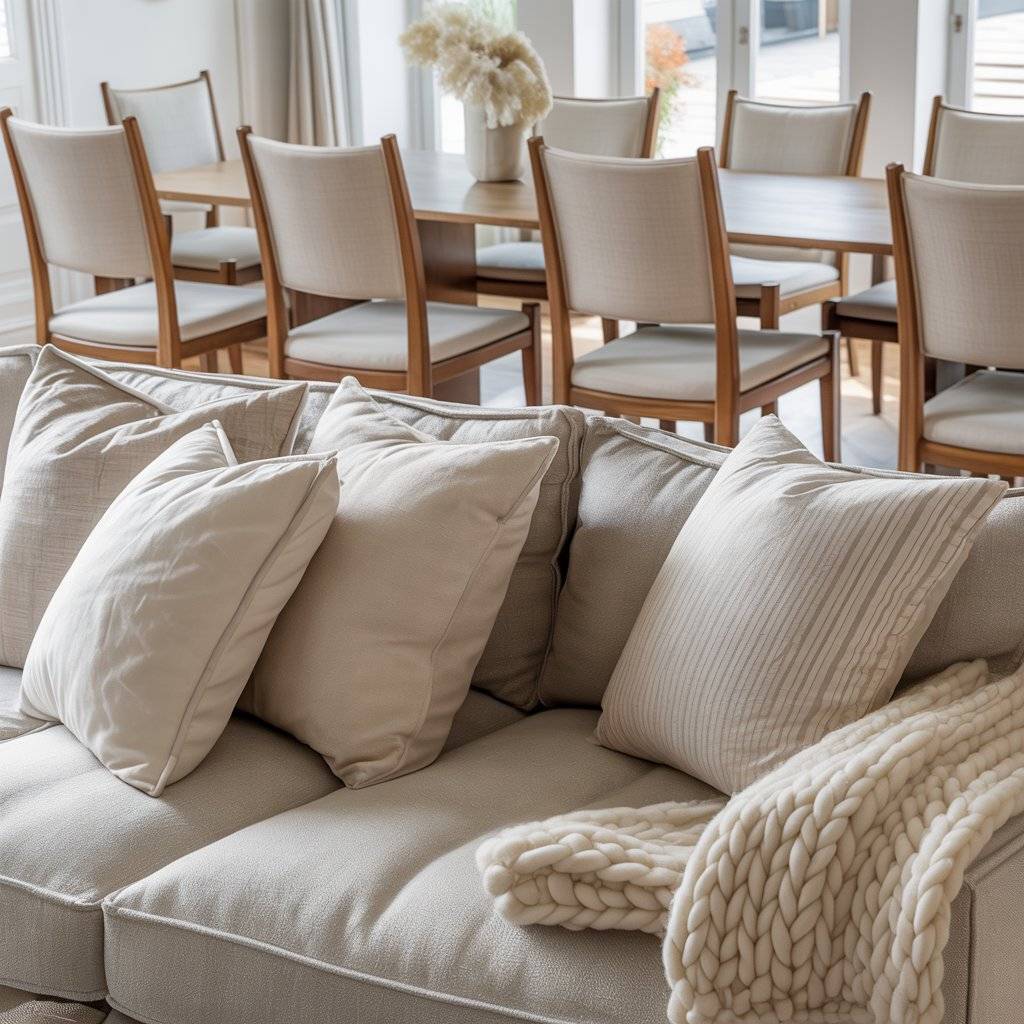
17. Try a Neutral Base with One Accent Color for the Dining Area
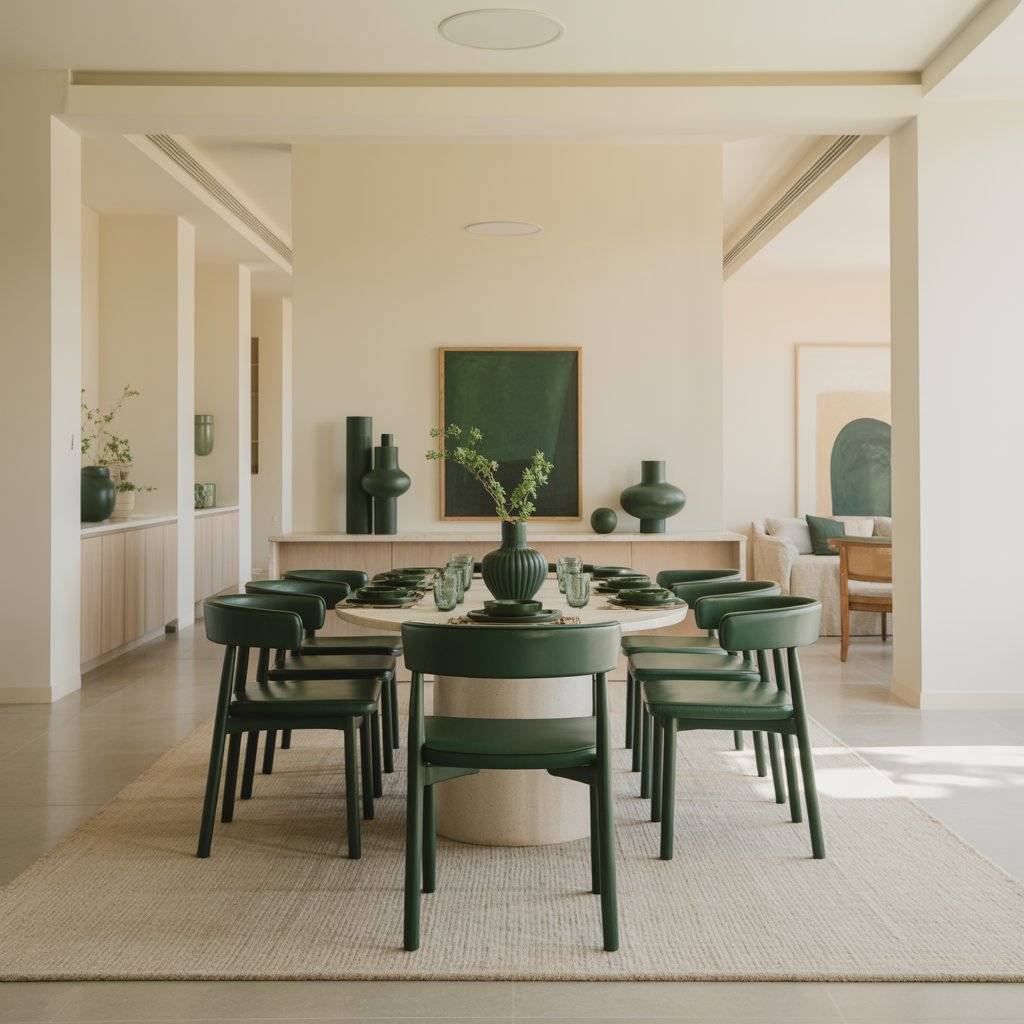
Starting with a neutral palette think creams, beiges, soft grays creates a calm and cohesive foundation for your open-concept space. Then, choose one accent color to bring life and personality to the dining zone, like deep green, navy, or warm terracotta.
This approach keeps the space visually clean while allowing small pops of color in chairs, table linens, or decorative pieces to stand out, making the room feel intentional without overwhelming the senses.
| · Table Linens / Runner: [Check price on Amazon] | · Accent Dining Chairs: [Check price on Amazon] | · Decorative Accessories: [Check price on Amazon] |

18. Add a Dining Area with Clear Glass Bubble Pendant Lighting

Clear glass bubble pendants bring a light, airy feel to your dining space while visually separating it from the living area. The transparency of the glass keeps sightlines open, so the open-concept room feels spacious rather than cluttered.
Grouping two or three pendants above the table creates a focal point and adds subtle sparkle, while the soft glow highlights the table without overwhelming the rest of the space. This style works well with both modern and classic interiors, making it a versatile, timeless choice for any combo layout.
| · Glass Bubble Pendant Lights: [Check price on Amazon] | · Lights Dining Table: [Check price on Amazon] |

19. Use a Fireplace as the Main Anchor
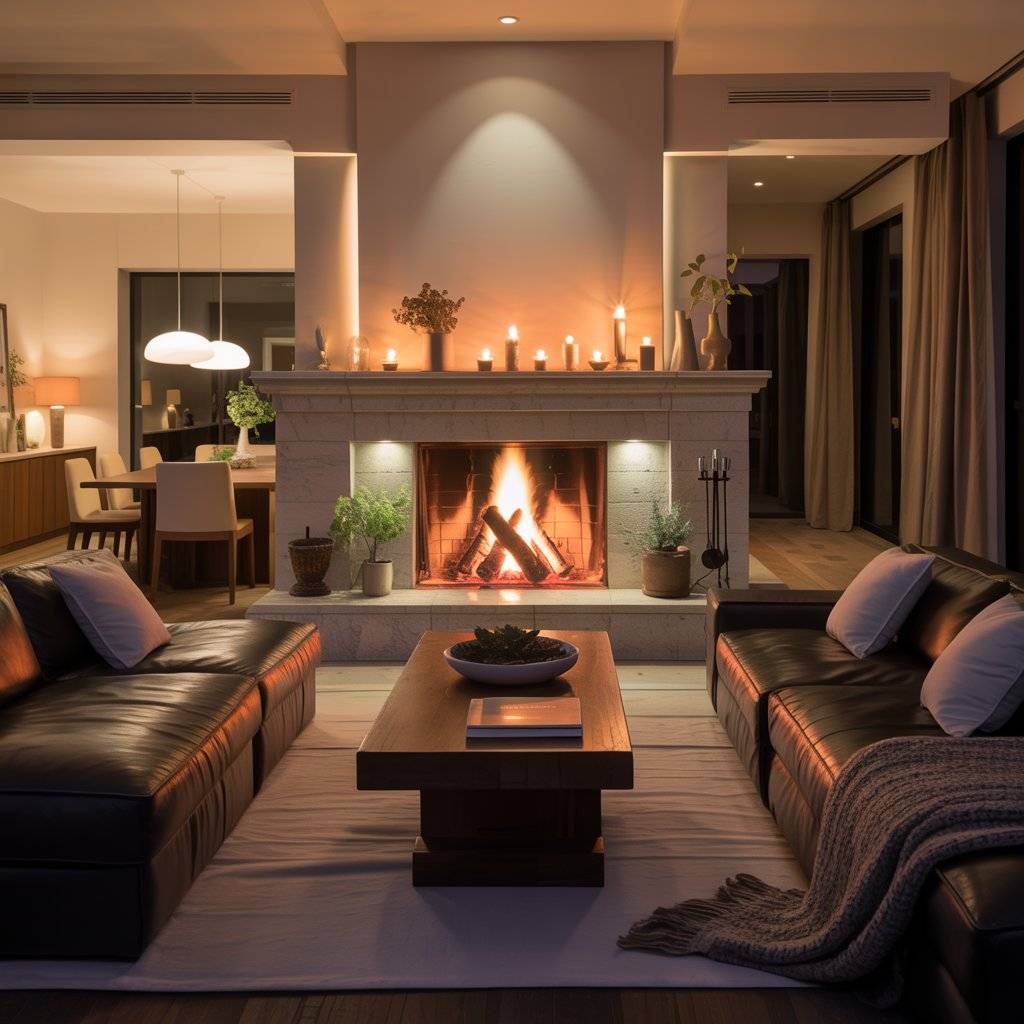
A fireplace can serve as the natural focal point for your open-concept living and dining space. Arrange the sofa around it to create a cozy living area, while positioning the dining table behind or to the side.
This layout visually separates the zones without walls, drawing the eye naturally and giving both areas a sense of purpose. Adding complementary lighting or a simple mantel display can further unify the look and make the space feel warm and inviting all season long.
| · Electric Fireplace / Mantel: [Check price on Amazon] | · Sofa / Seating: [Check price on Amazon] | · Mantel Decor: [Check price on Amazon] |
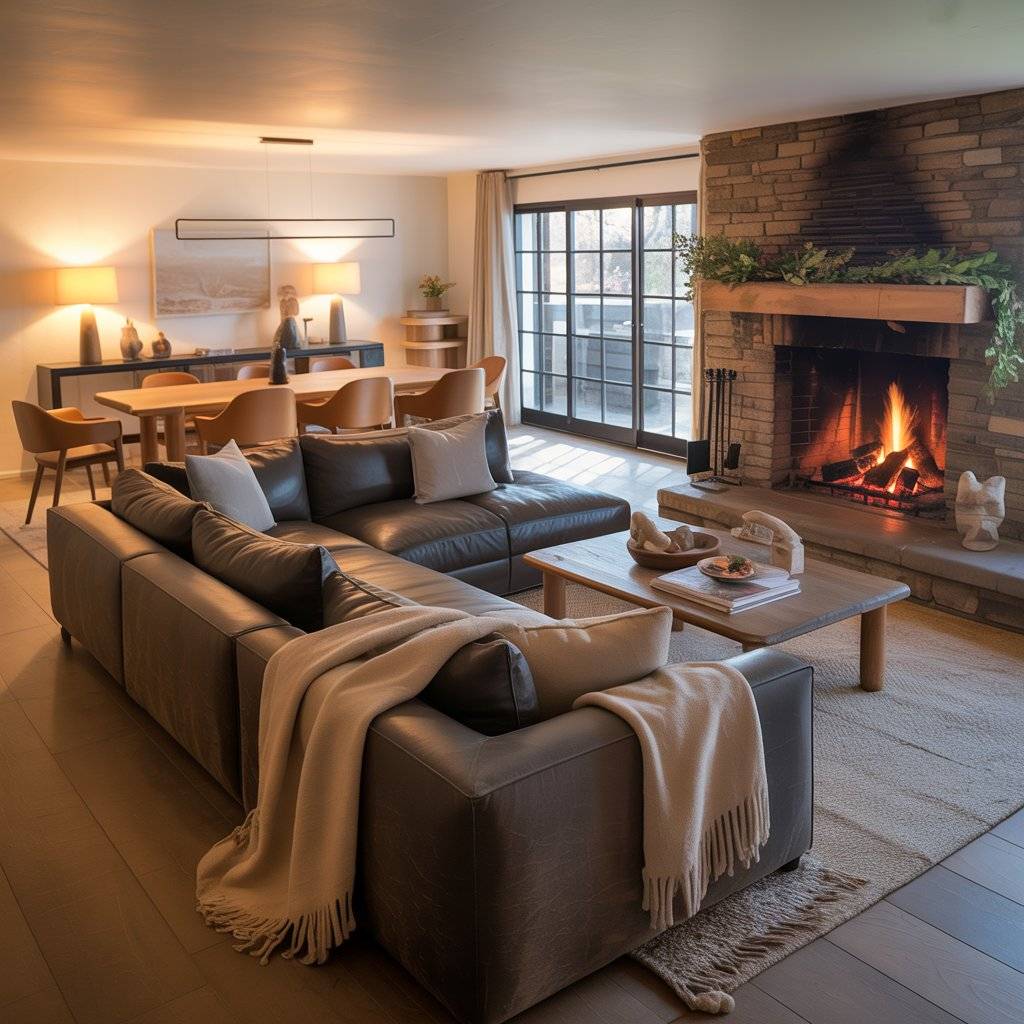
20. Keep Dining Decor Limited and Intentional
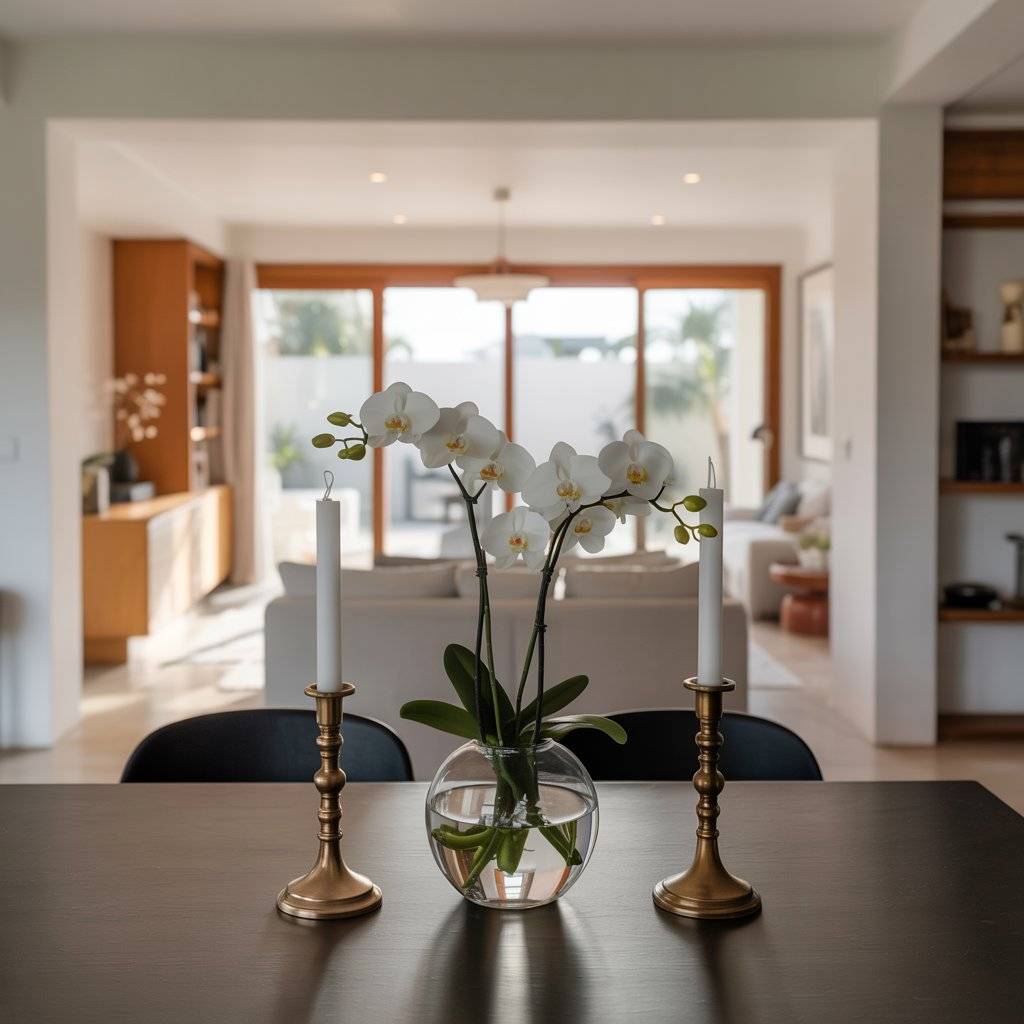
In open-concept spaces, clutter is immediately noticeable, so less is truly more. Choose a few carefully curated pieces for your dining area like a simple centerpiece, a pair of candlesticks, or a small vase of fresh flowers.
Avoid overcrowding the table with too many knick-knacks, which can make the space feel chaotic and break the visual flow with the living area. By keeping decor minimal and intentional, you create a clean, stylish, and inviting space that complements the overall open-concept design
| · Table Centerpiece: [Check price on Amazon] | · Candlestick Holders: [Check price on Amazon] | · Vase / Floral Arrangement: [Check price on Amazon] |

21. Colorful Green Couch: Fresh Dining + Living Room Glow

A green couch instantly brightens an open-concept space and creates a natural, inviting focal point. Place it so it faces the living area while keeping the dining zone visible, or use it as a subtle divider between the two zones.
Add complementary accents like throw pillows, rugs, or greenery to echo the color through both spaces, giving the entire room a fresh, cohesive glow. Even a single bold color like this can energize your combo space without overwhelming it.
| · Green Sofa: [Check price on Amazon] | · Throw Pillows: [Check price on Amazon] | · Area Rug: [Check price on Amazon] |
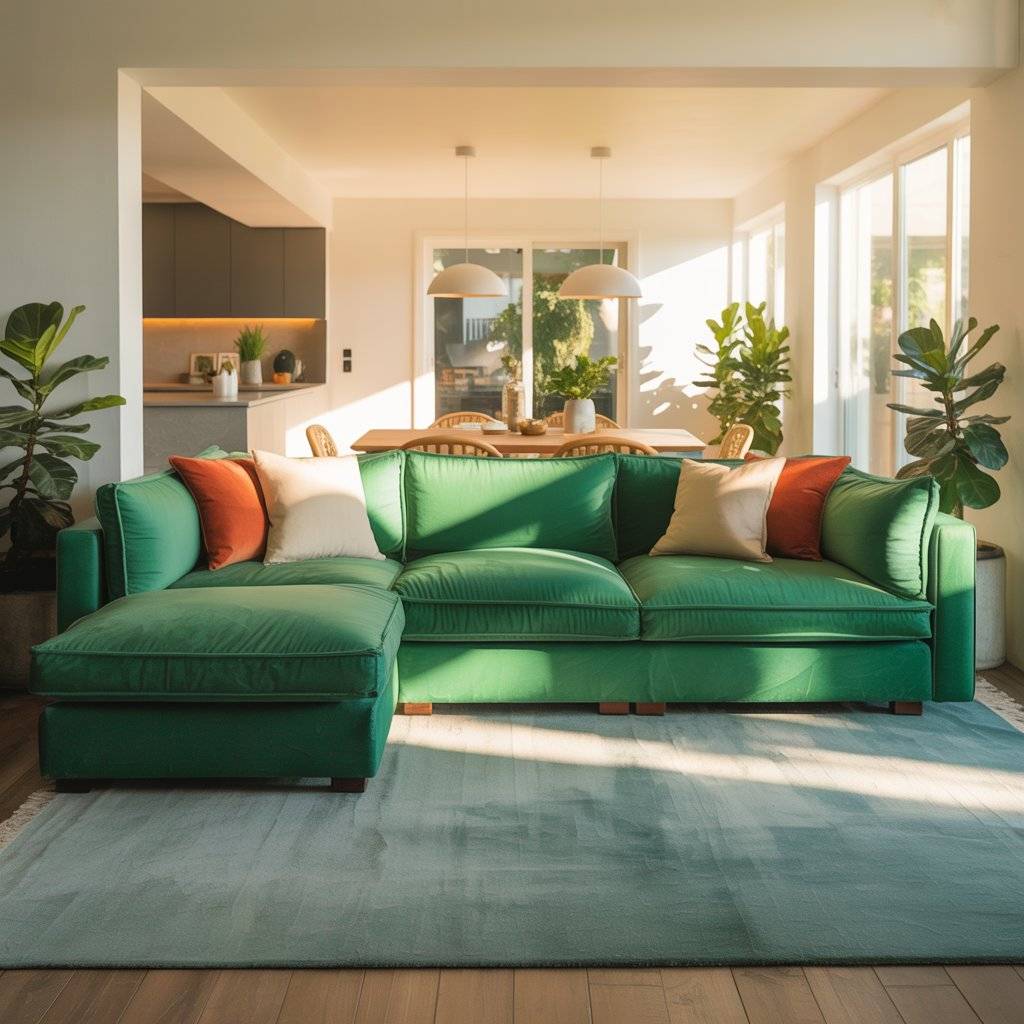
22. Try a Layout with the Dining Table by the Window
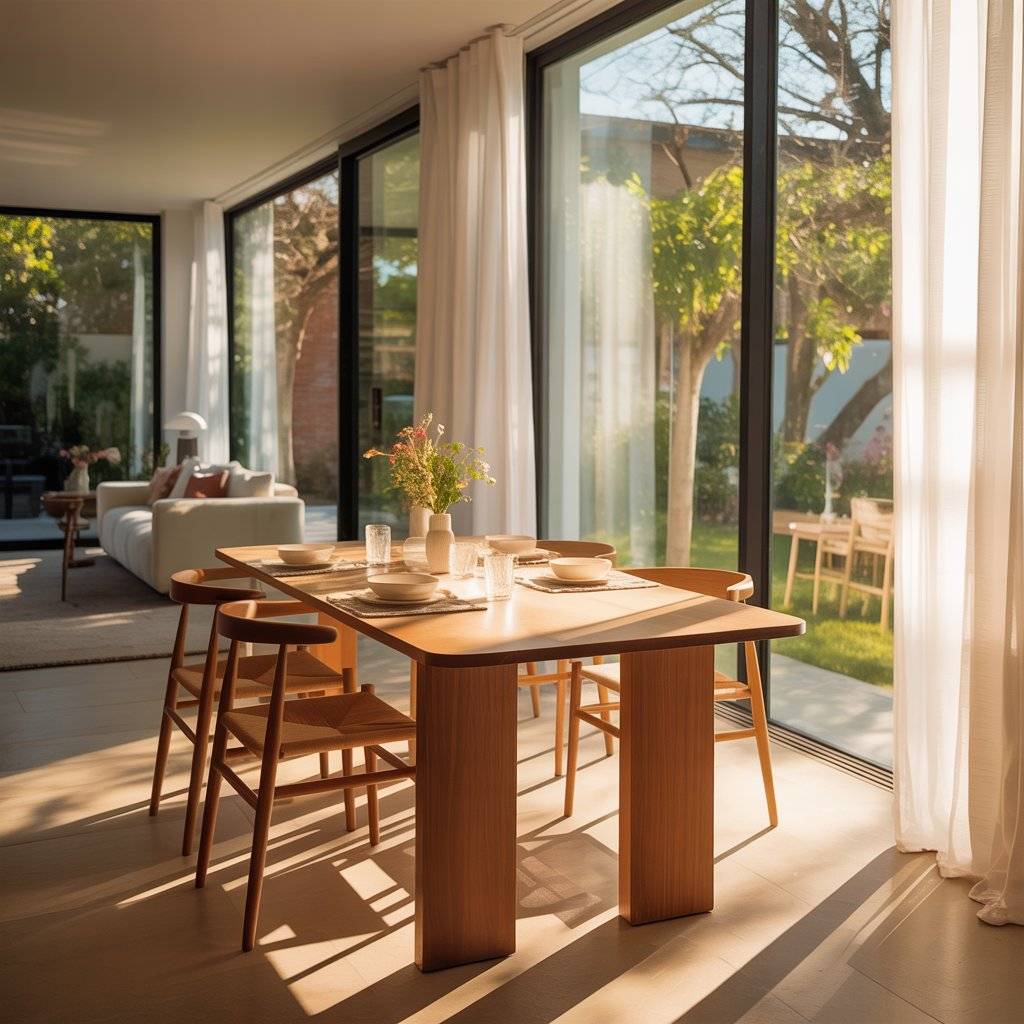
Placing your dining table near a window lets natural light flood your meals, creating a bright and inviting atmosphere. Sunlight not only makes the space feel larger but also adds warmth and energy to your open-concept living area.
This layout encourages a pleasant dining experience, whether it’s a casual breakfast or a cozy evening dinner, and can also highlight outdoor views, connecting the interior and exterior visually. Pair with light, airy curtains or simple blinds to control glare without blocking the glow.
| · Sofa and Dining Table: [Check price on Amazon] | · Window Treatments / Blinds: [Check price on Amazon] |
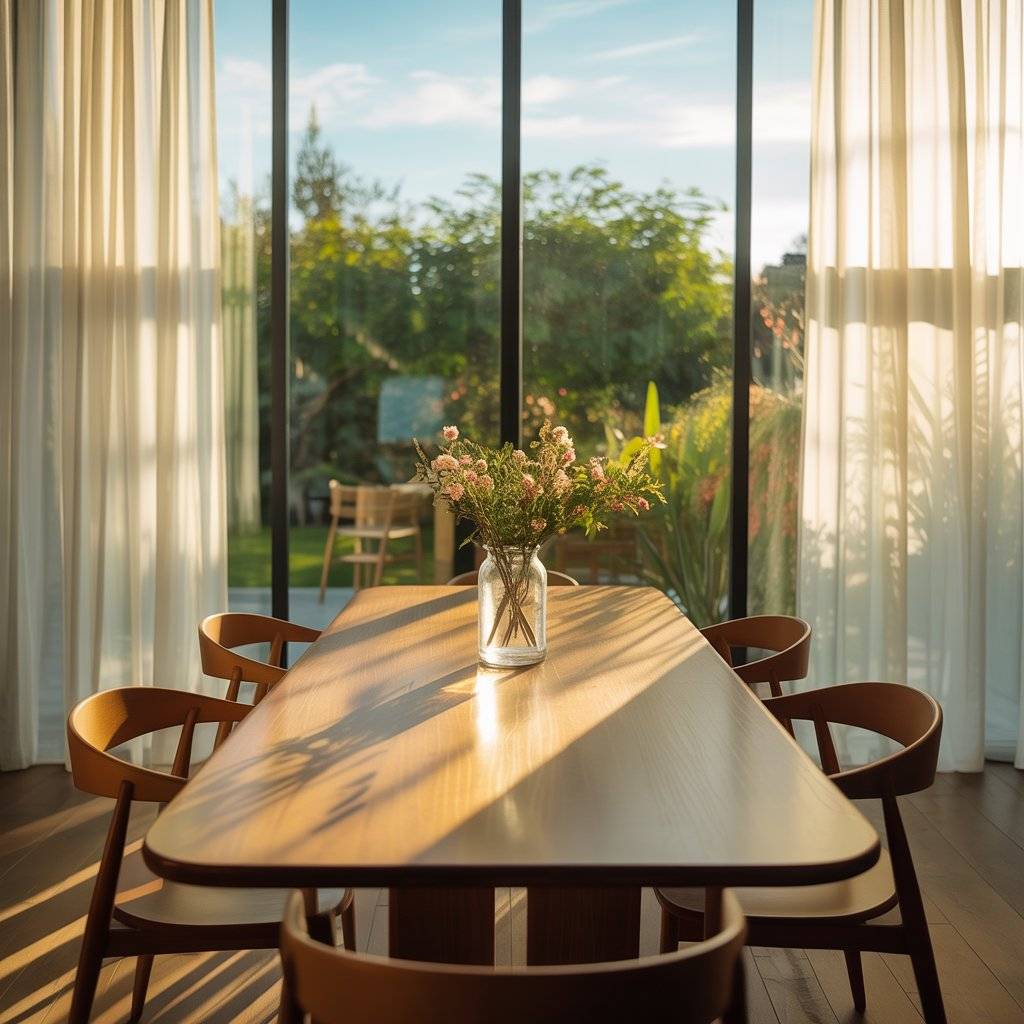
23. Keep the Dining Chairs Lightweight
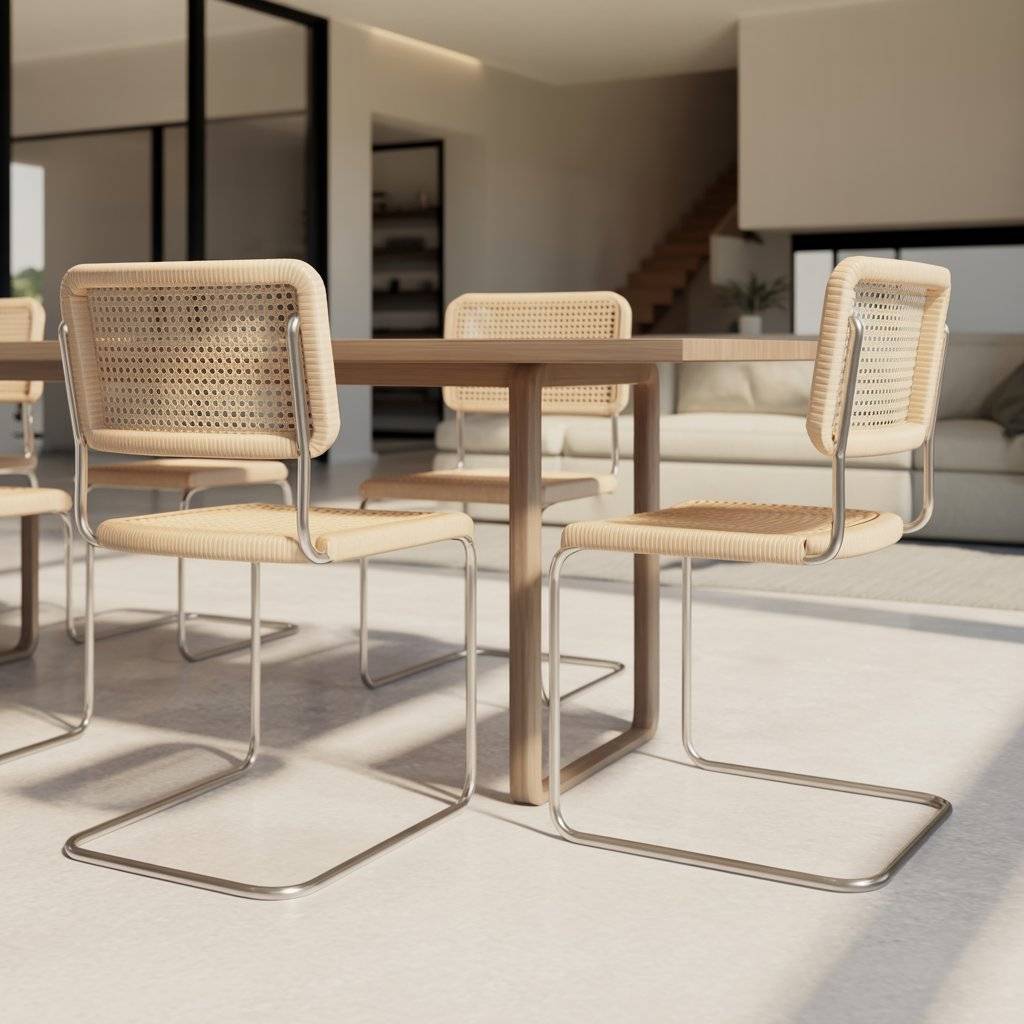
Choosing lightweight dining chairs makes your open-concept space feel airy and flexible. Chairs that are easy to move allow you to quickly rearrange seating for gatherings, clean under the table, or open up floor space when needed.
Visually, lighter chairs don’t dominate the room, helping the living and dining areas flow together naturally while keeping the overall look uncluttered and balanced.
| · Lightweight Dining Chairs: [Check price on Amazon] | · Dining table set for 4 modern luxury [Check price on Amazon] |

24. Add a Cohesive Focal Point to the Dining Area

Create a strong visual anchor in your open-concept space by choosing one standout piece that draws the eye and unites both zones. This could be a bold area rug under the dining table, a large piece of artwork on the wall, or a dramatic pendant light hanging above the table.
A well-chosen focal point not only adds personality but also helps balance the living and dining areas, giving the entire space a polished, intentional look.
| · Wall Art / Prints: [Check price on Amazon] | · Pendant Light: [Check price on Amazon] |
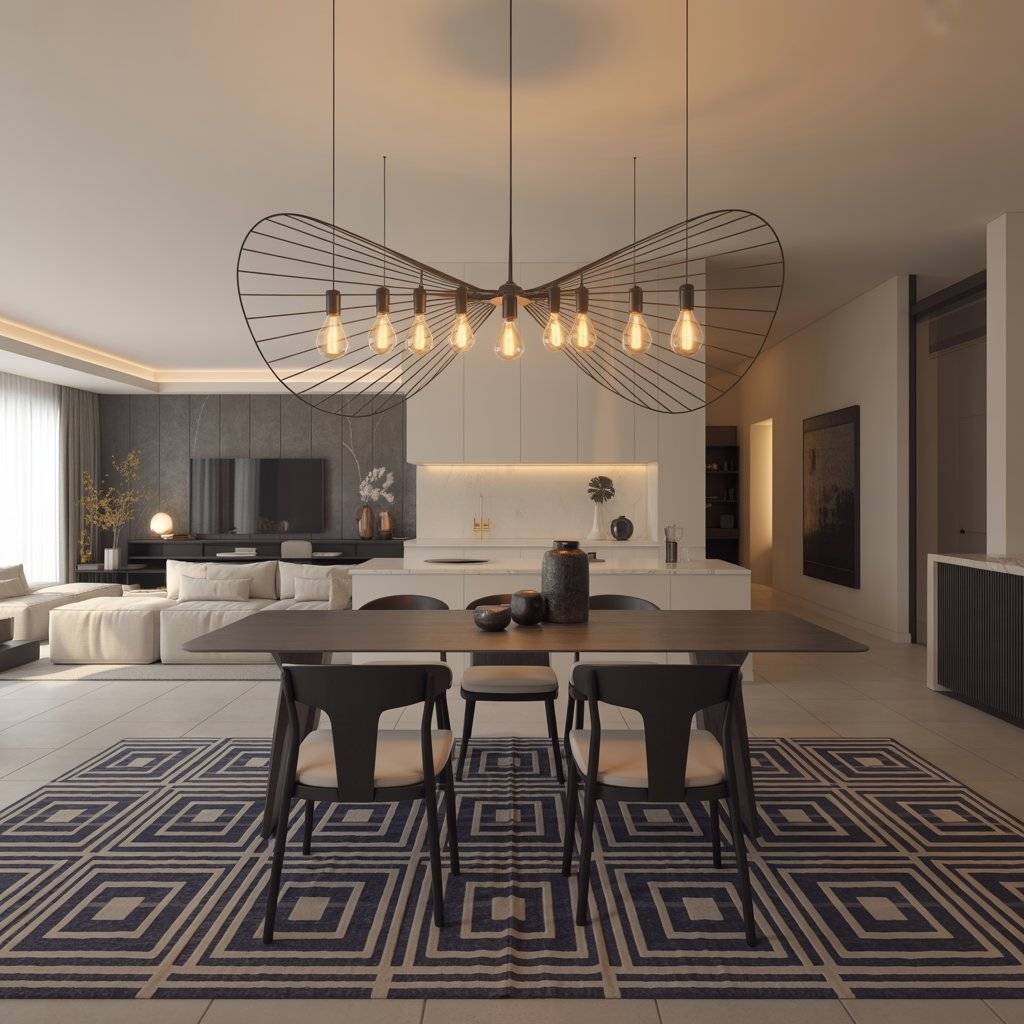
25. Soft Gray Tones with Warm Wooden Furniture for Modern Decor

Soft gray walls or upholstery paired with warm wooden furniture create a modern yet inviting atmosphere in open-concept spaces. The gray provides a neutral, calming backdrop, while the natural wood tones add warmth and texture, preventing the room from feeling cold or sterile.
This combination works well for both living and dining areas, helping the two zones feel connected while still allowing each to stand out with its own character. Add a few accent pieces like brass lamps, woven rugs, or green plants to complete the cohesive, contemporary look.
| · Gray Sofa / Chairs: [Check price on Amazon] | · Wooden Coffee Table / Dining Table: [Check price on Amazon] | · Accent Decor: [Check price on Amazon] |
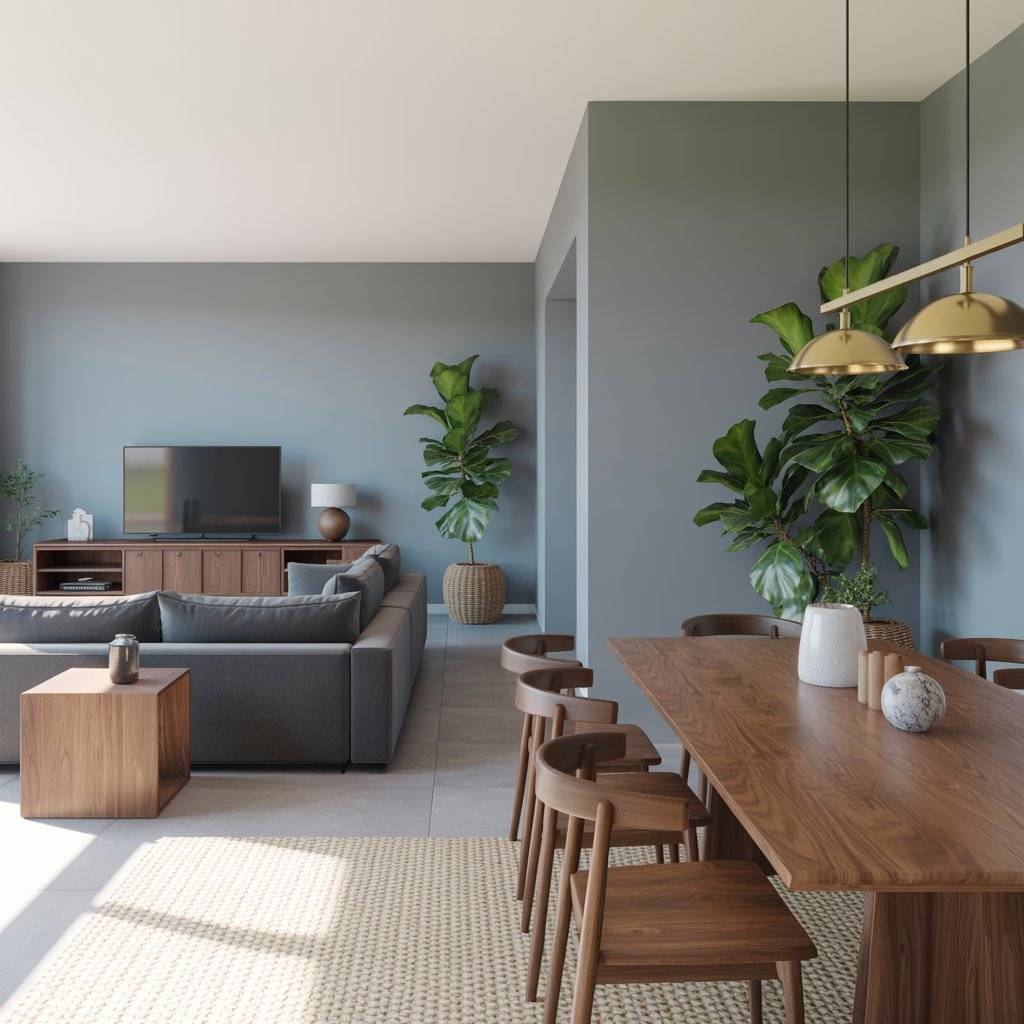
This gives both zones a shared identity.
Conclusion
Open-concept living room and dining room combos it’s not complicated. With a clear layout, a consistent color palette, and these 25 ideas, you can create a space that feels balanced, stylish, and comfortable.
Start with one simple change, like a new rug or a pendant light, and build from there. Matching wood tones, layering textures, and adding thoughtful decor will make the room feel cohesive and welcoming.
The key is flow and connection: let furniture guide movement, repeat colors and finishes, and include personal touches that make the space feel like home. Over time, your open-concept space will feel both practical and beautifully put together.
Related Post:
- Natural Wood Tables: Rustic & Eco-Friendly Furniture - December 8, 2025
- Enchanting Christmas Garden Designs for a Cozy, Festive Backyard - November 29, 2025
- 35 Best Open Layout Living Room Dining Room Designs - November 29, 2025

